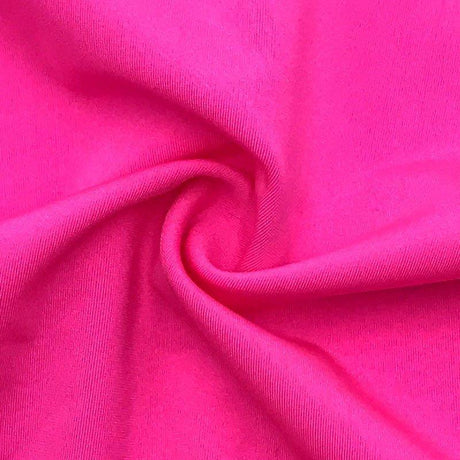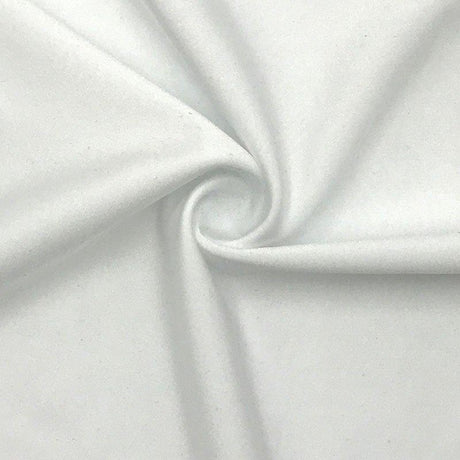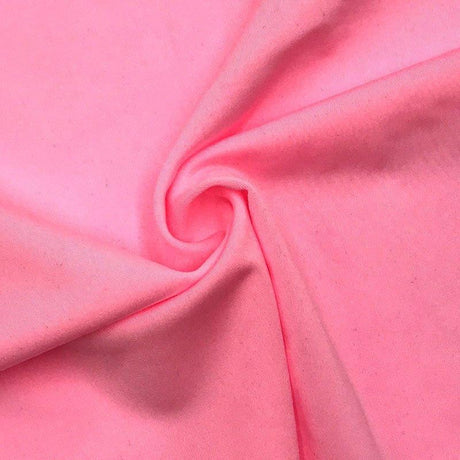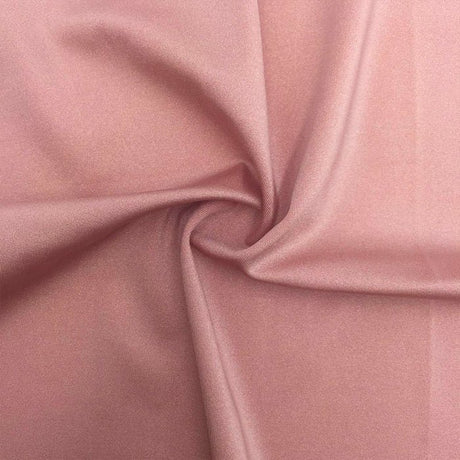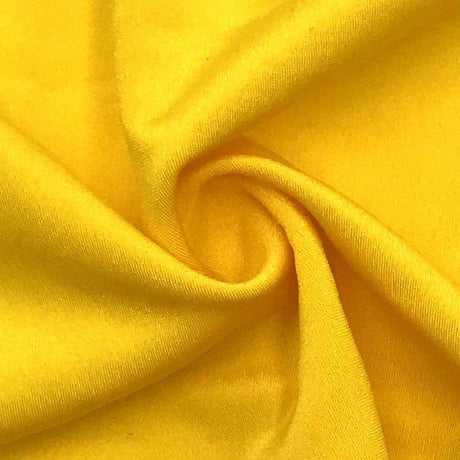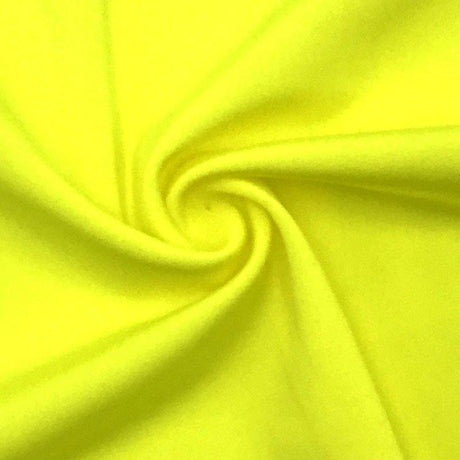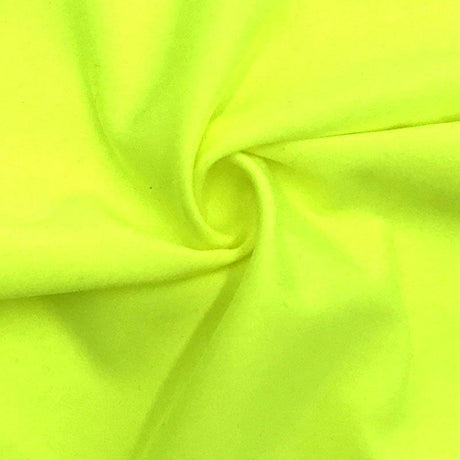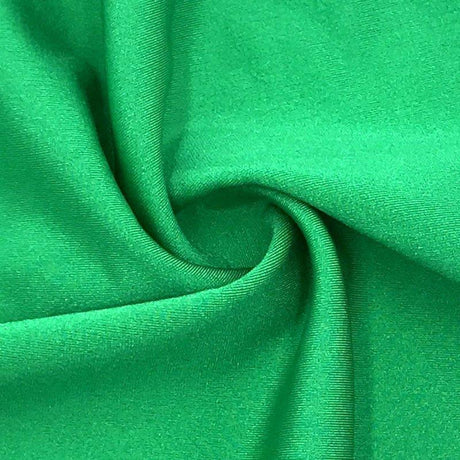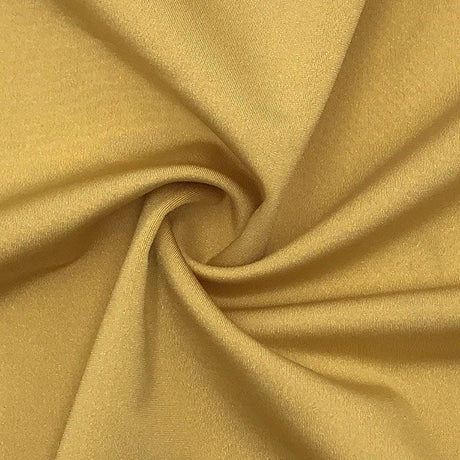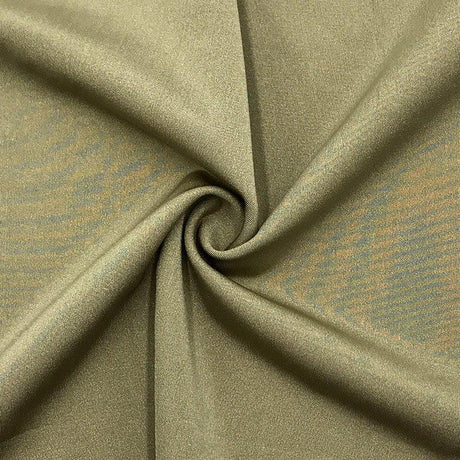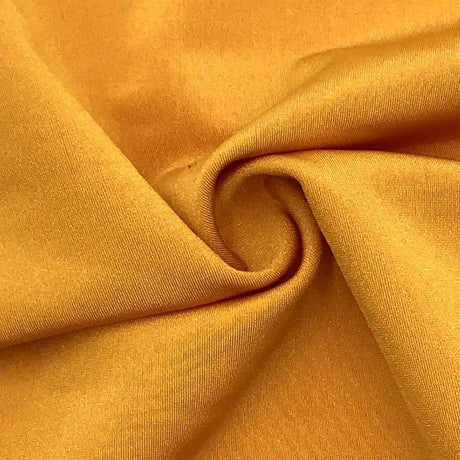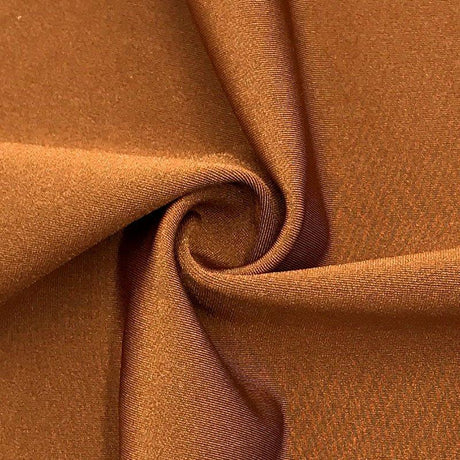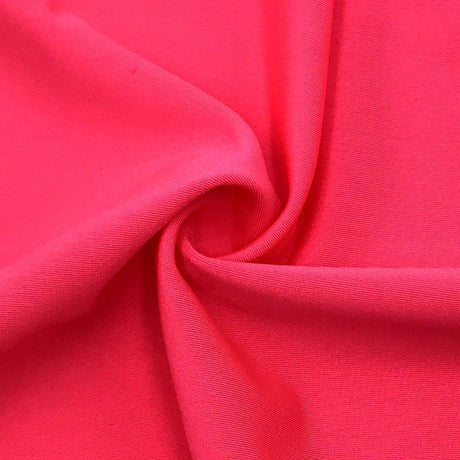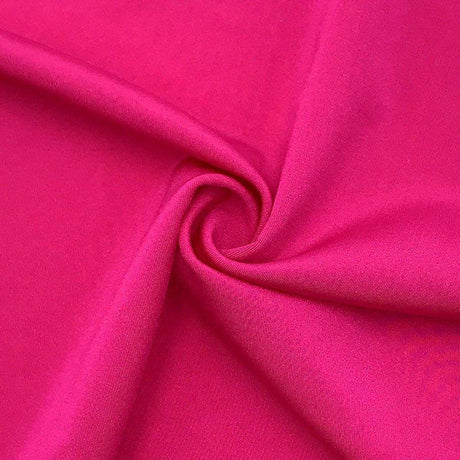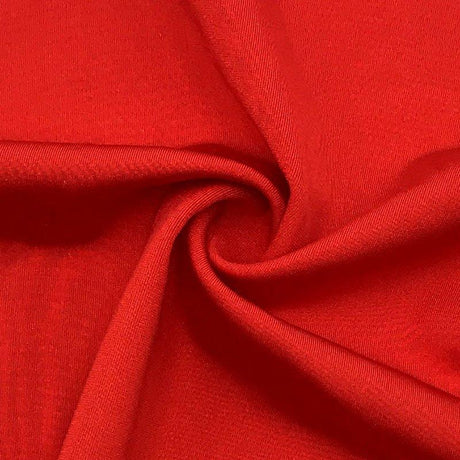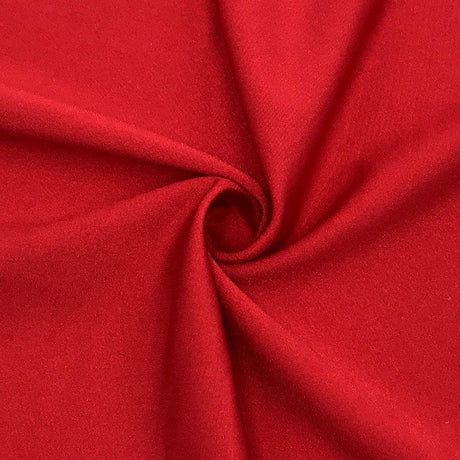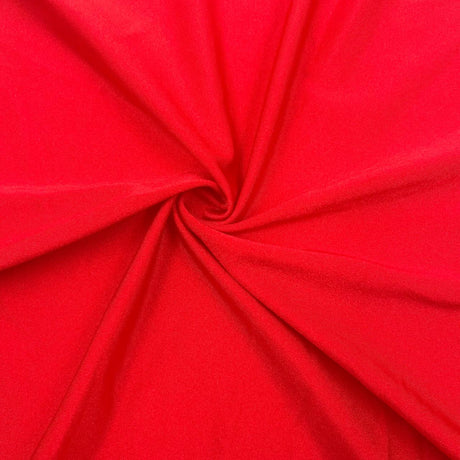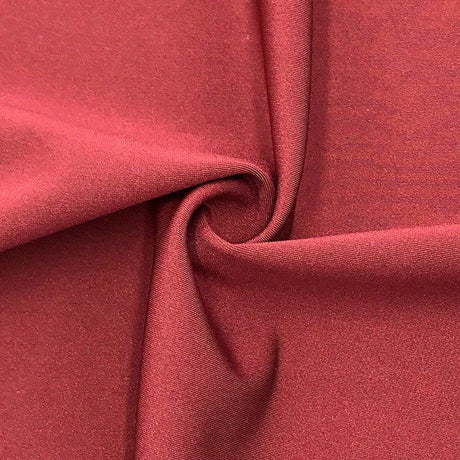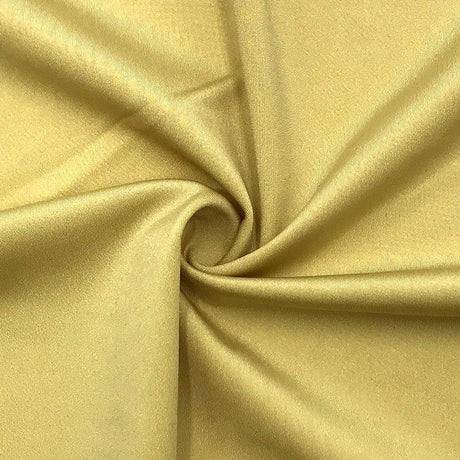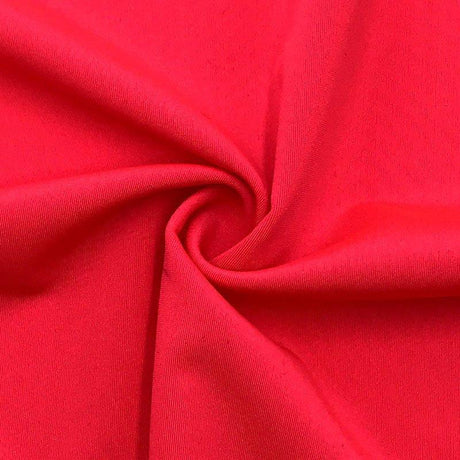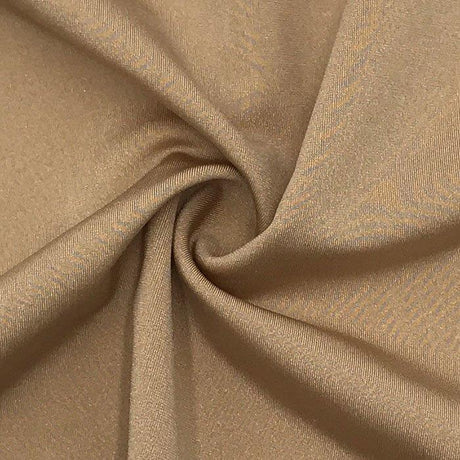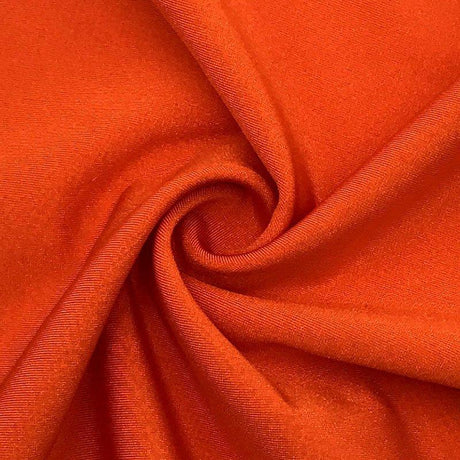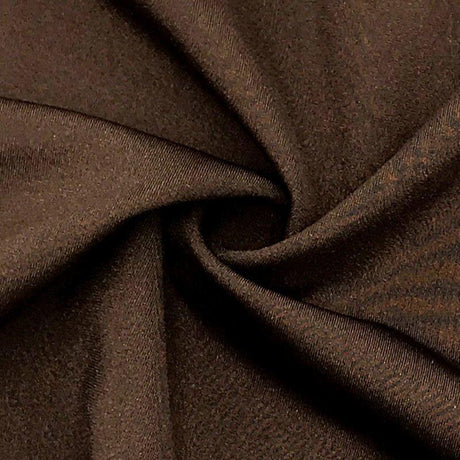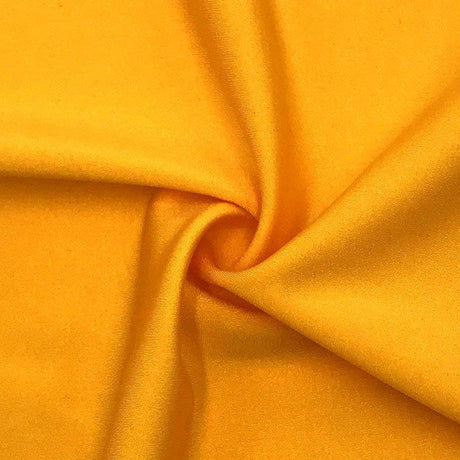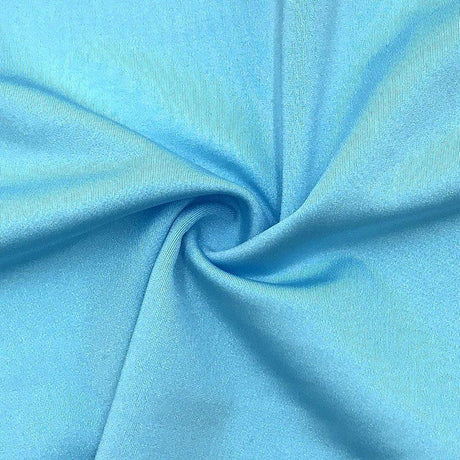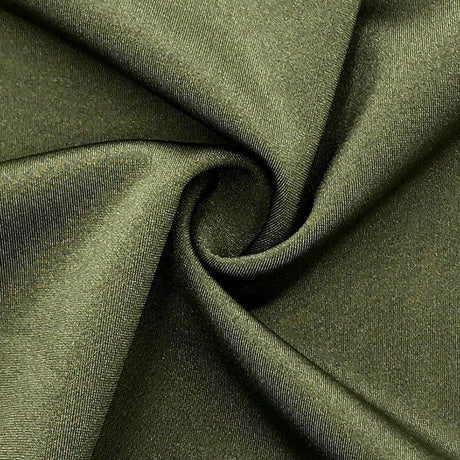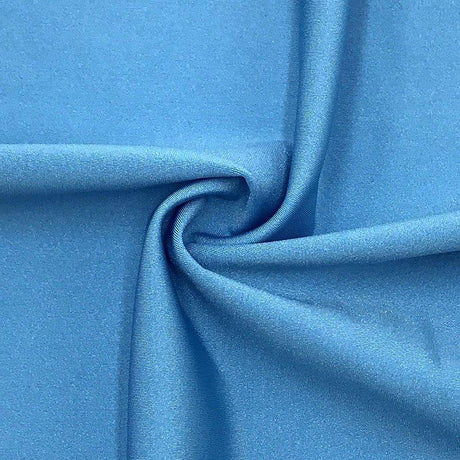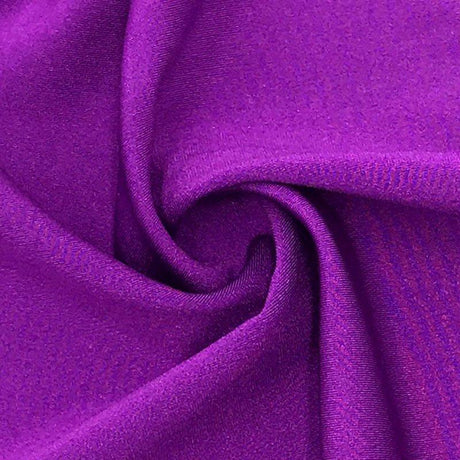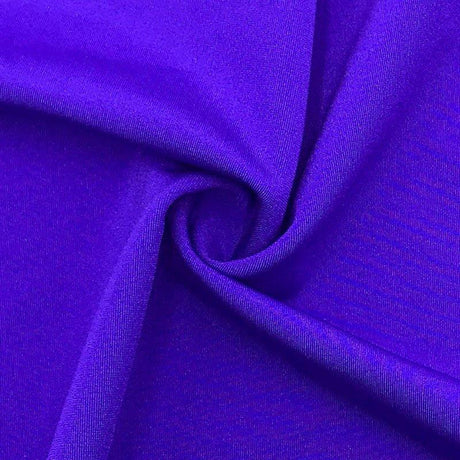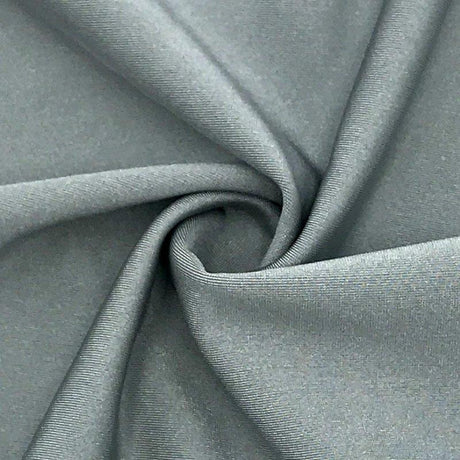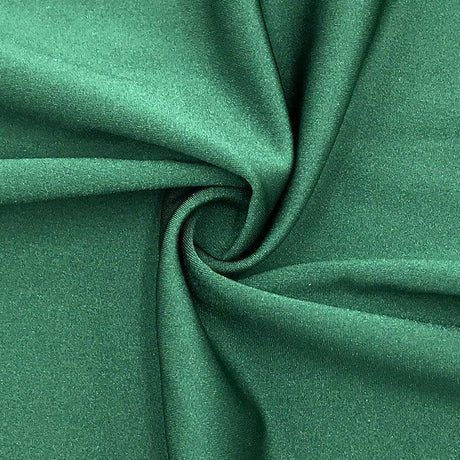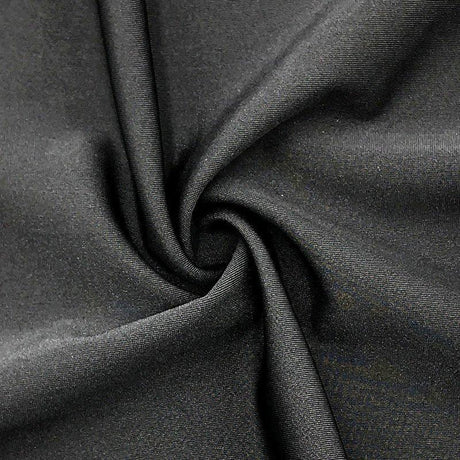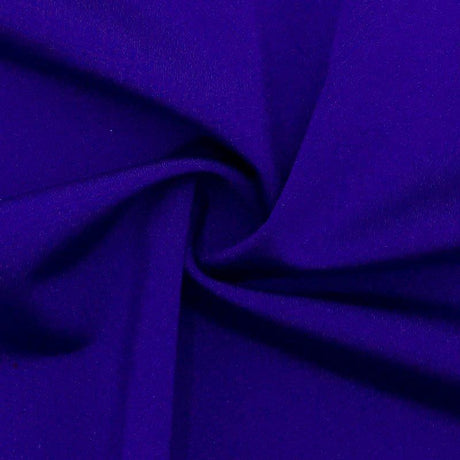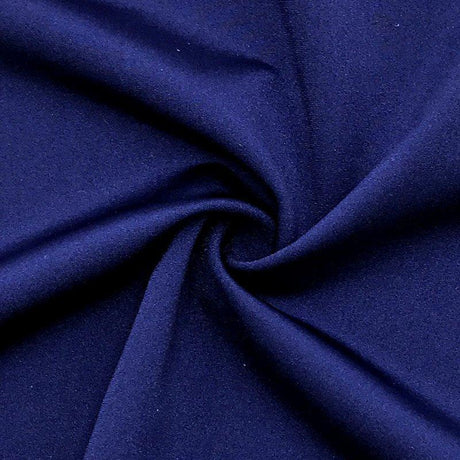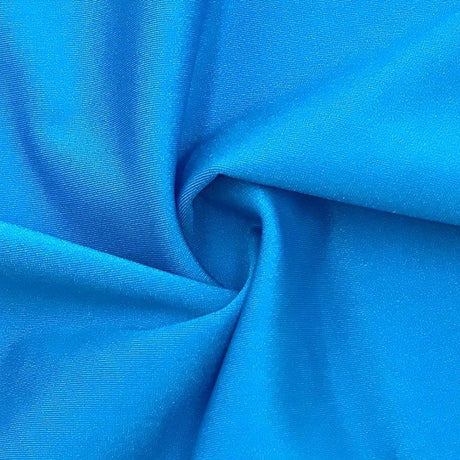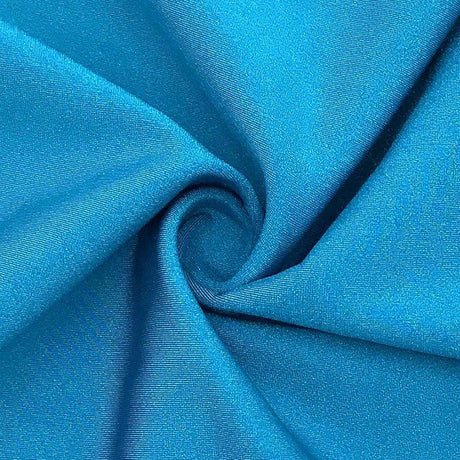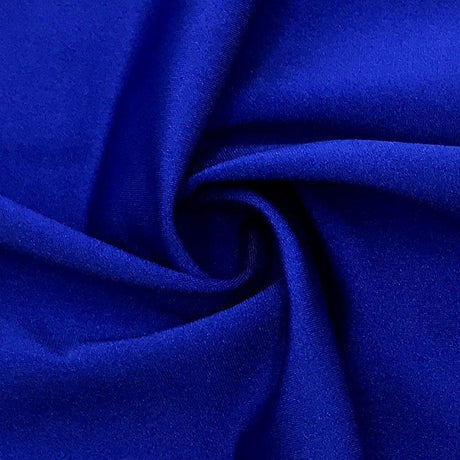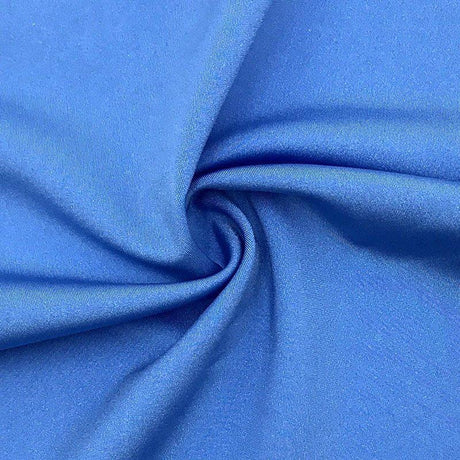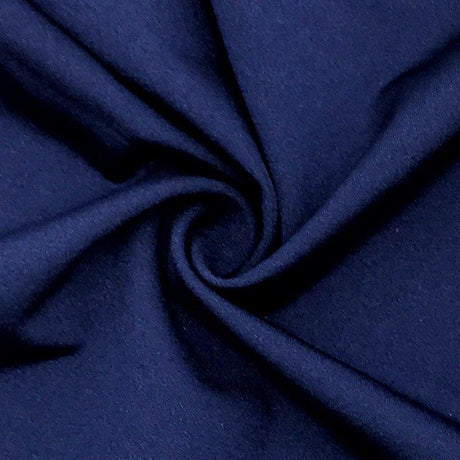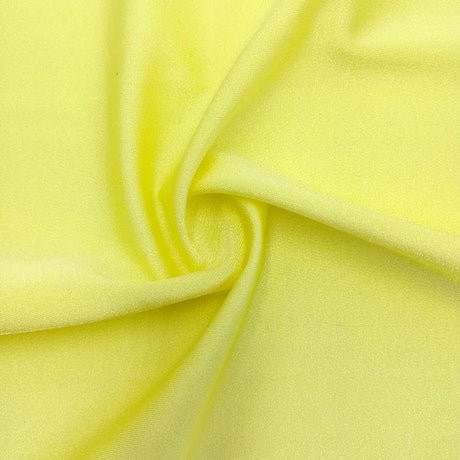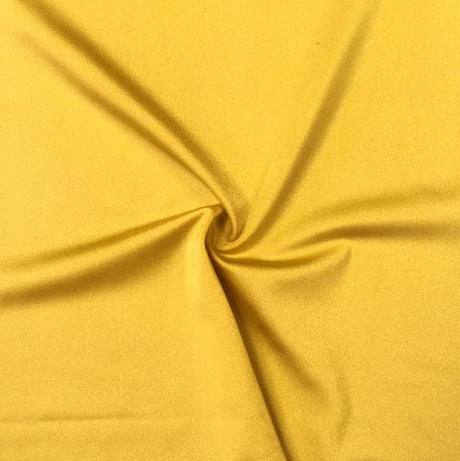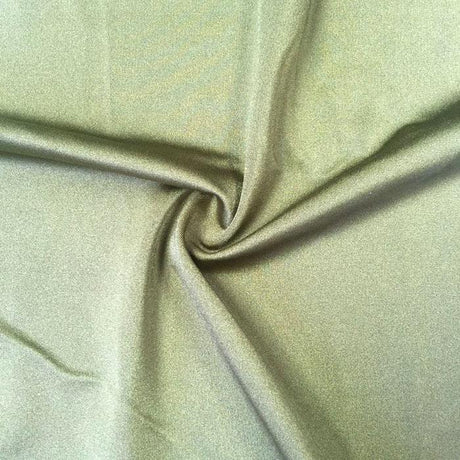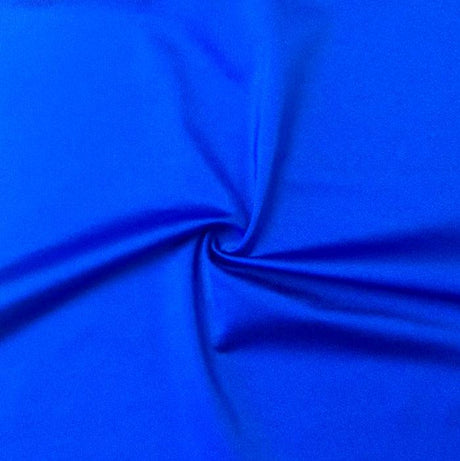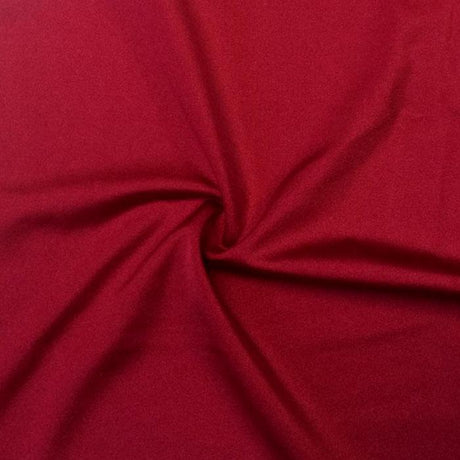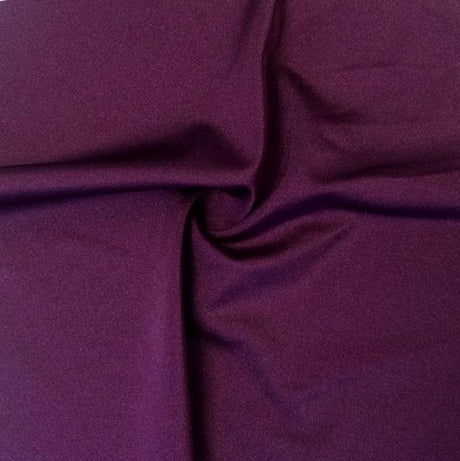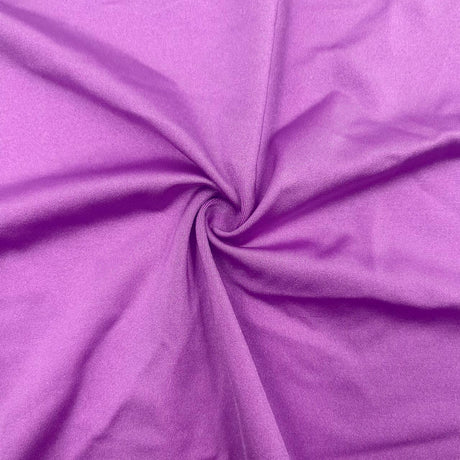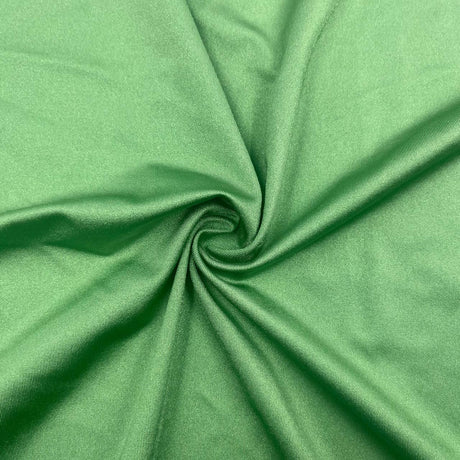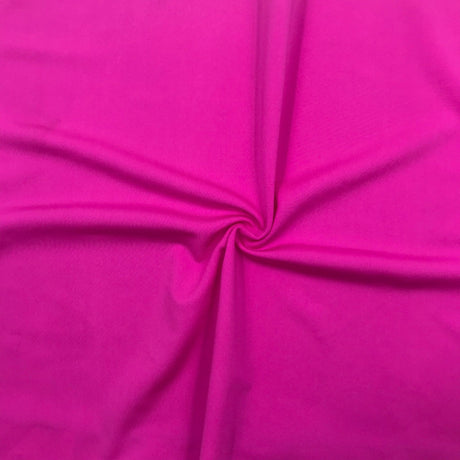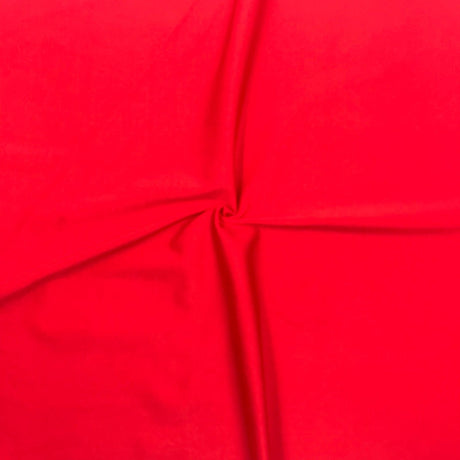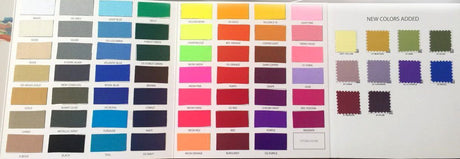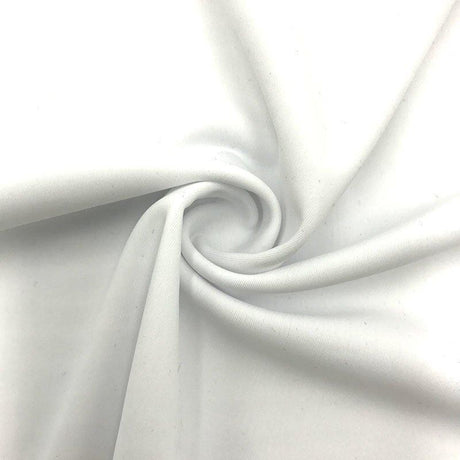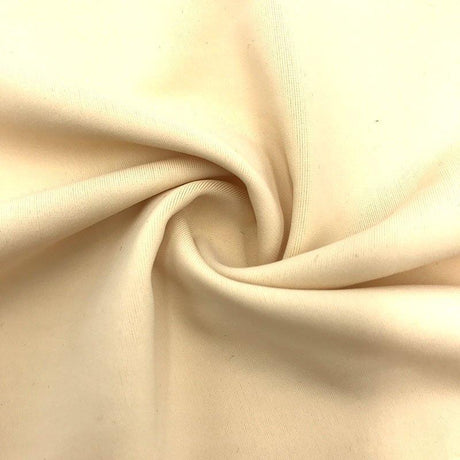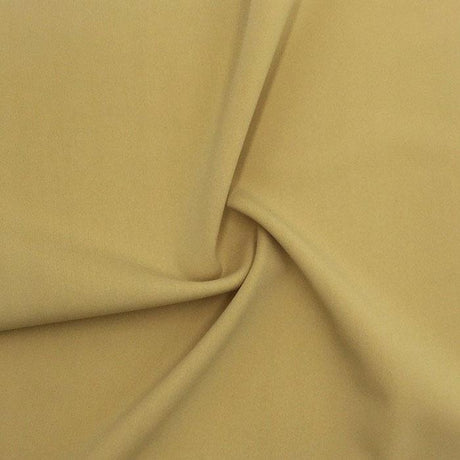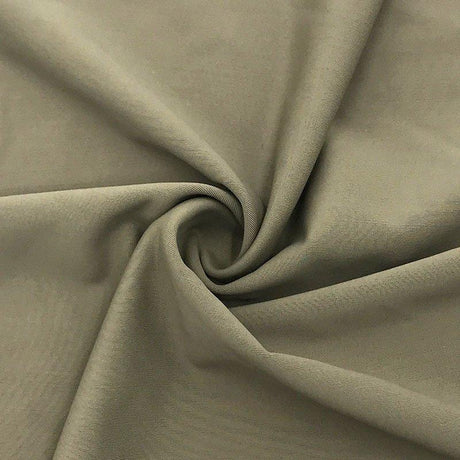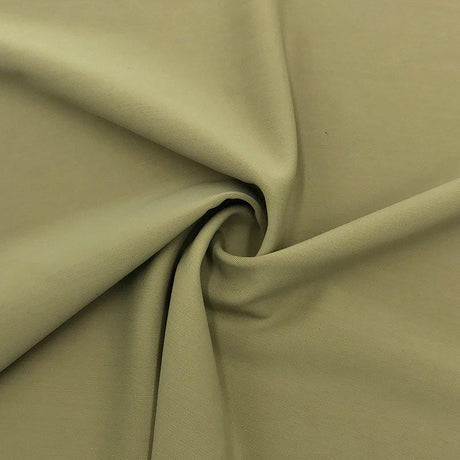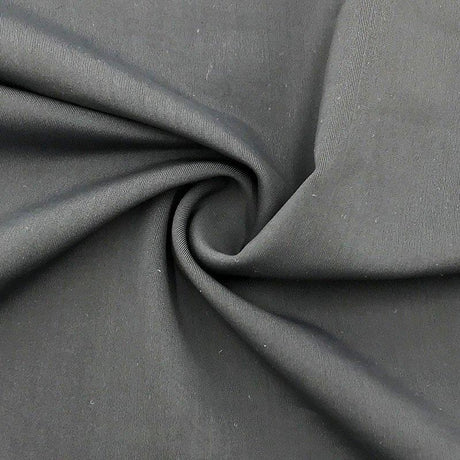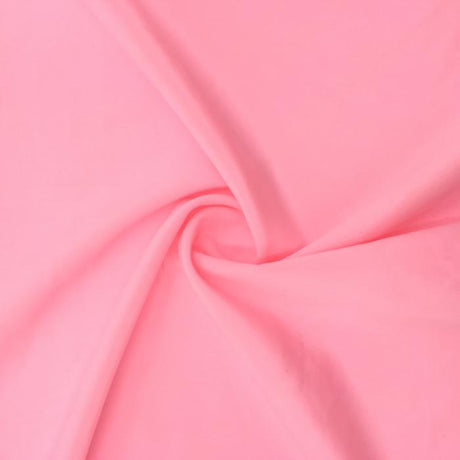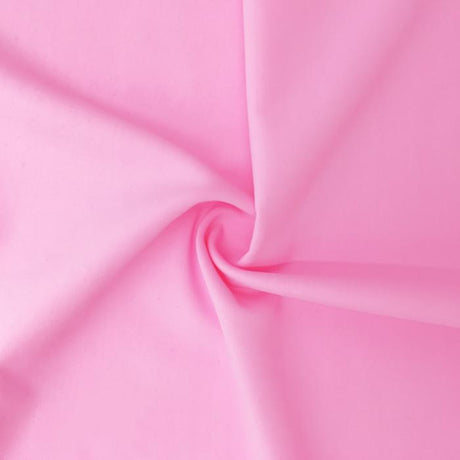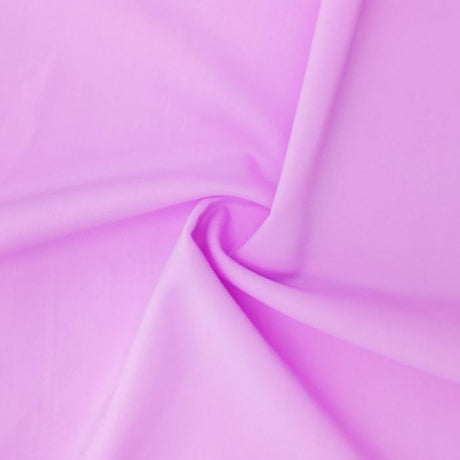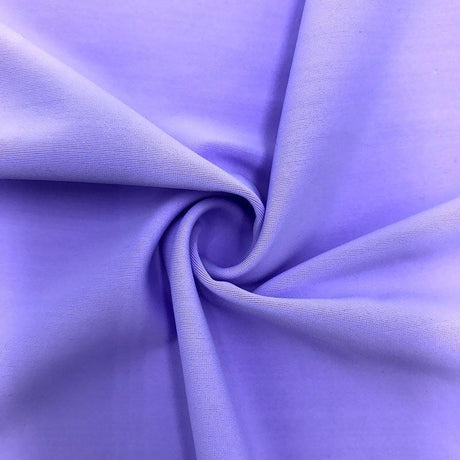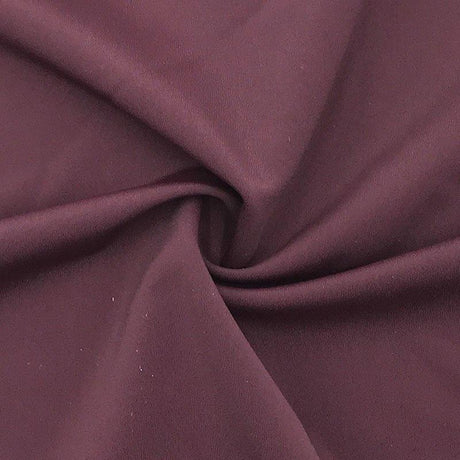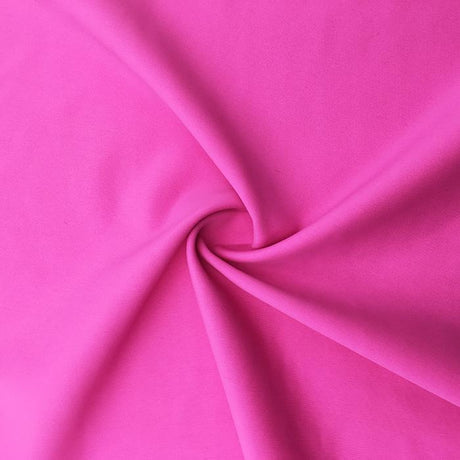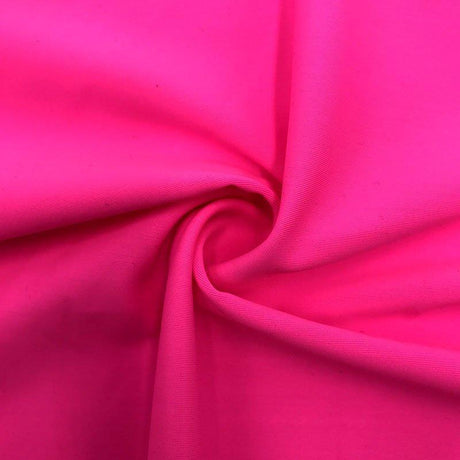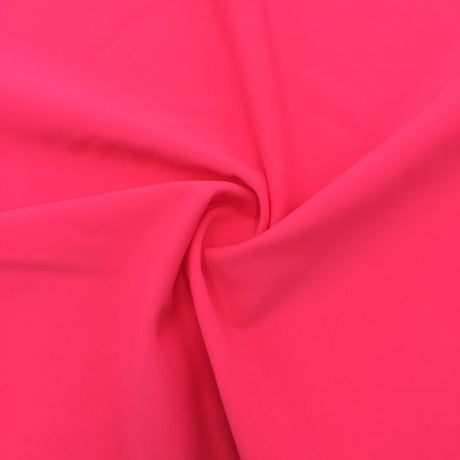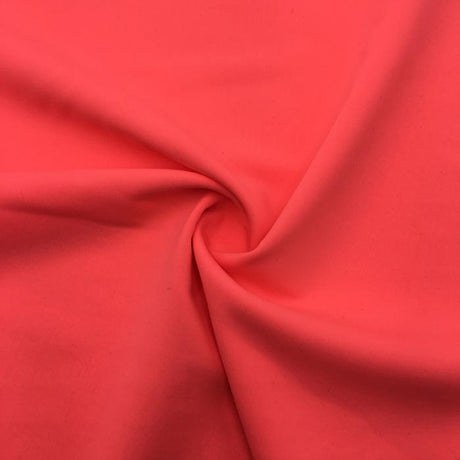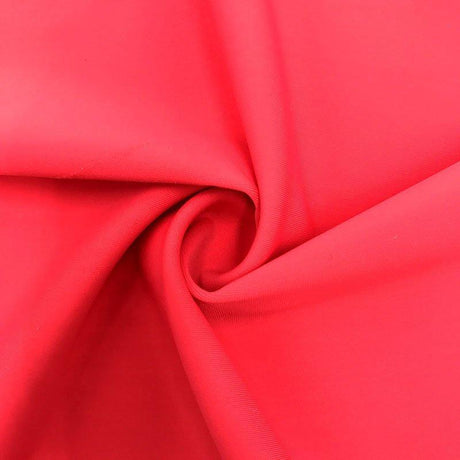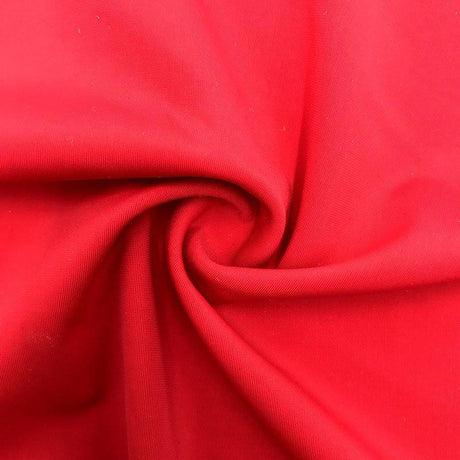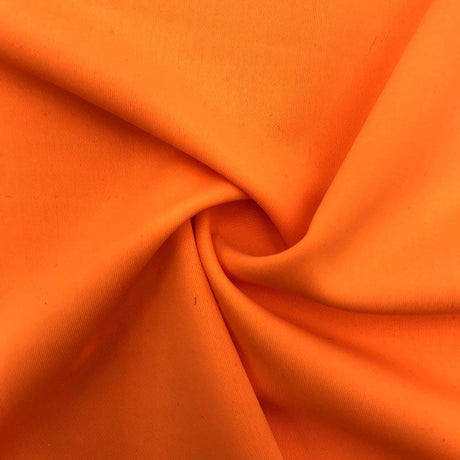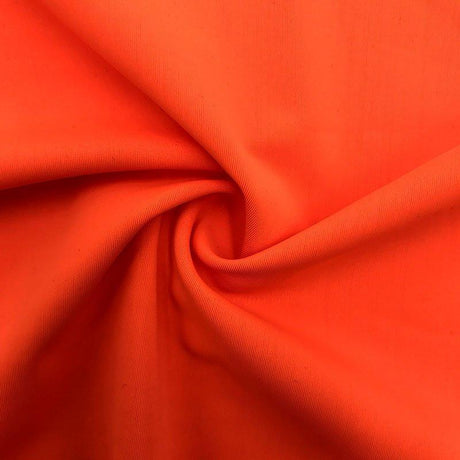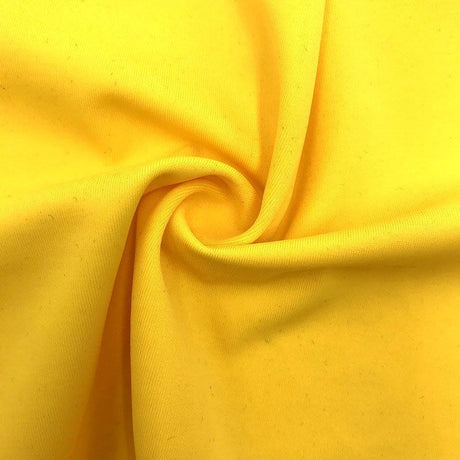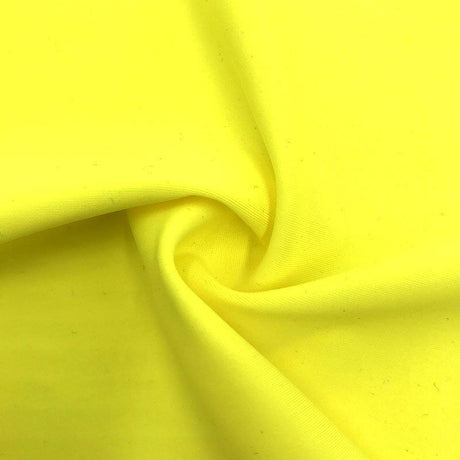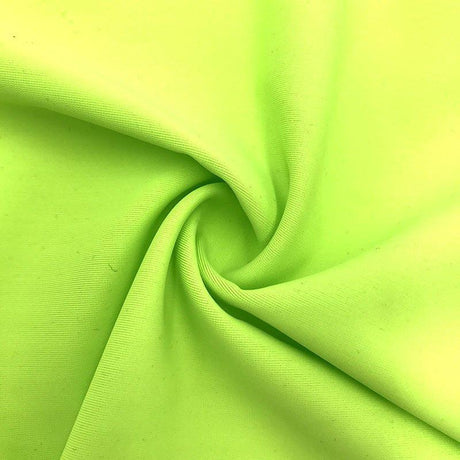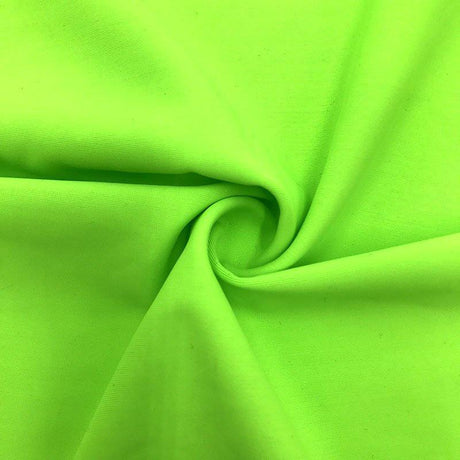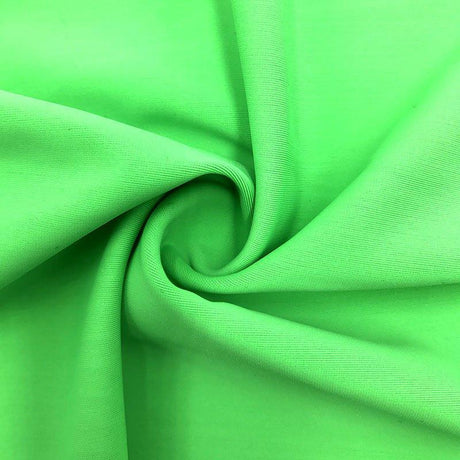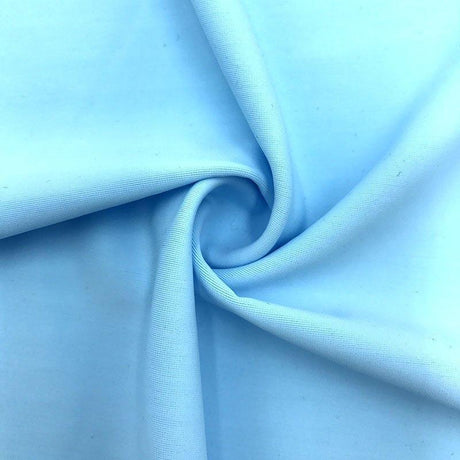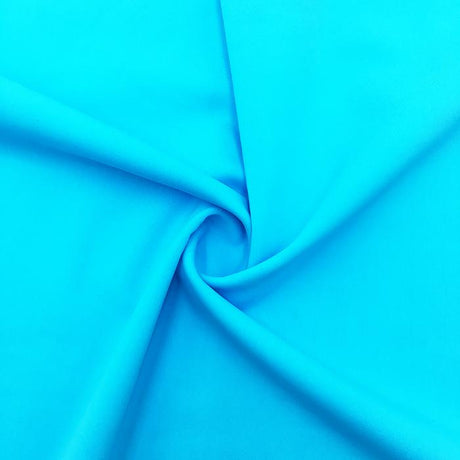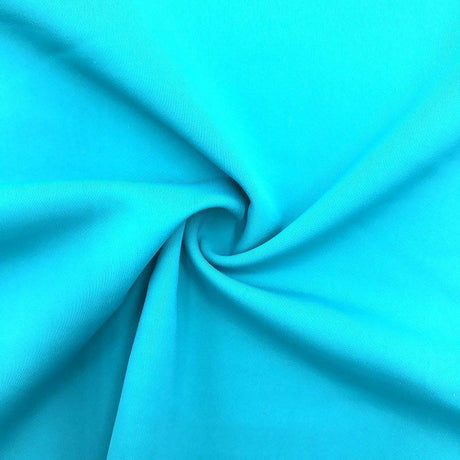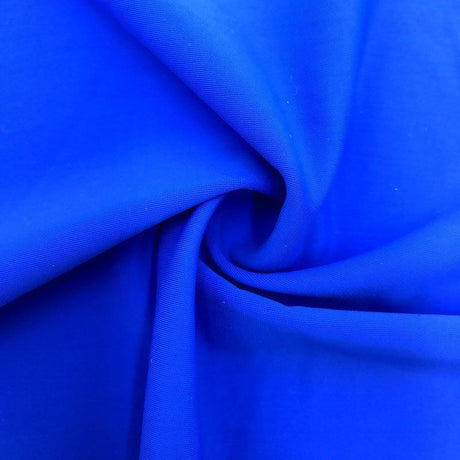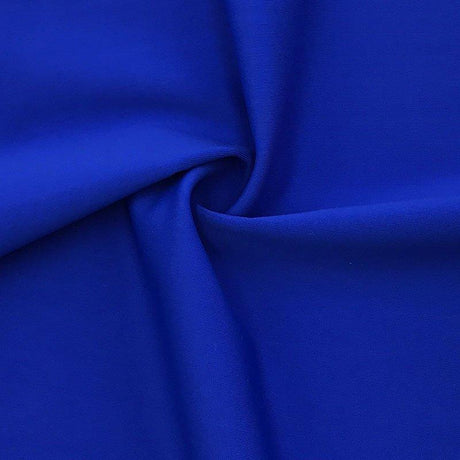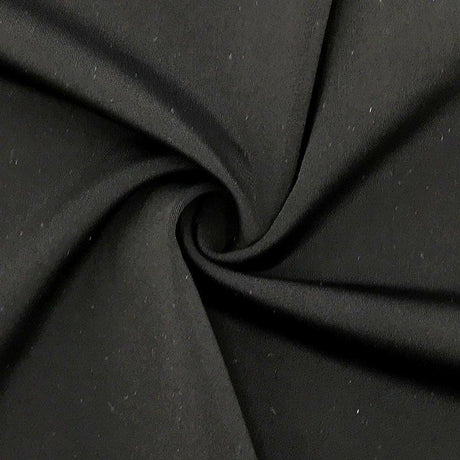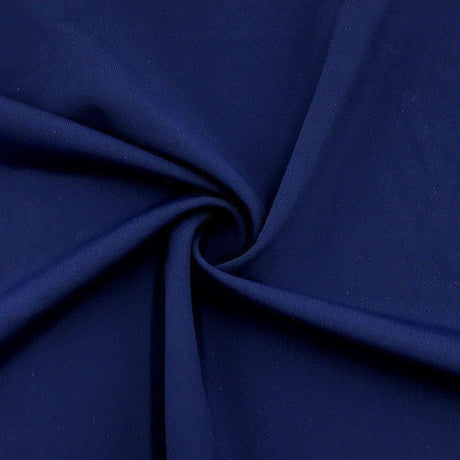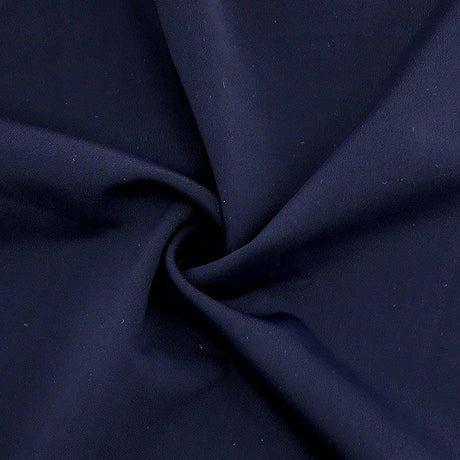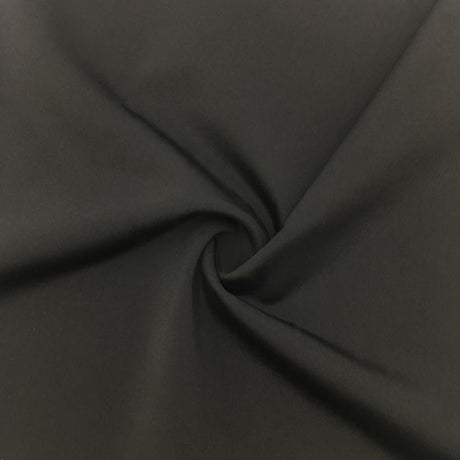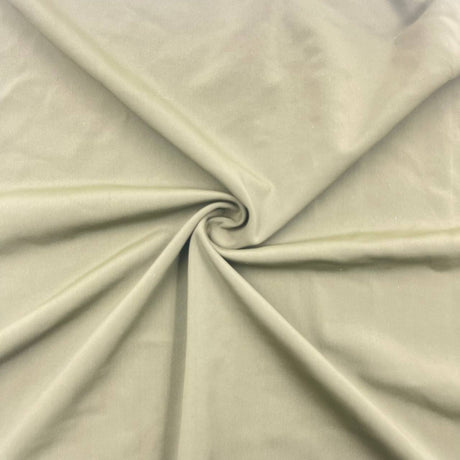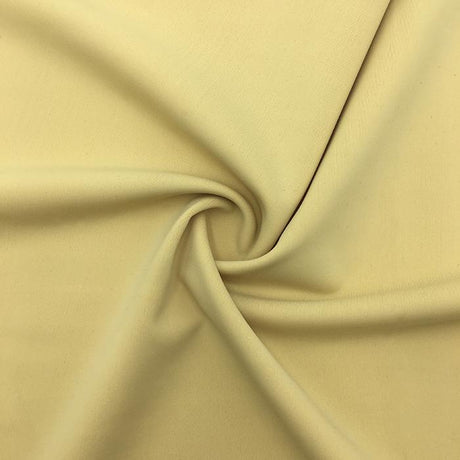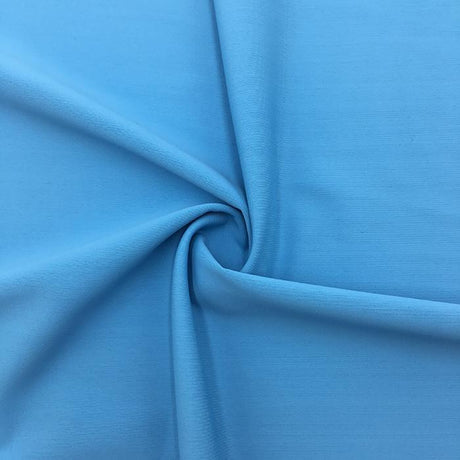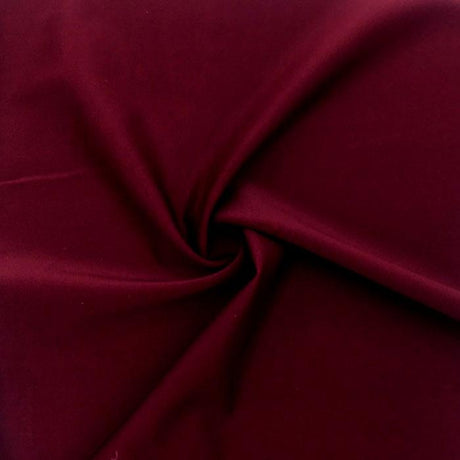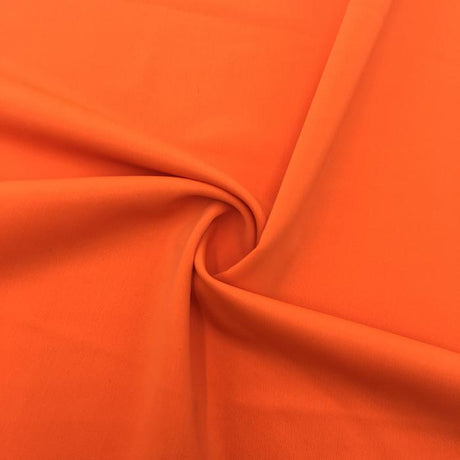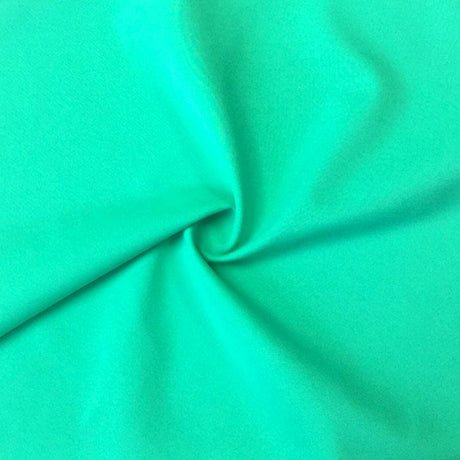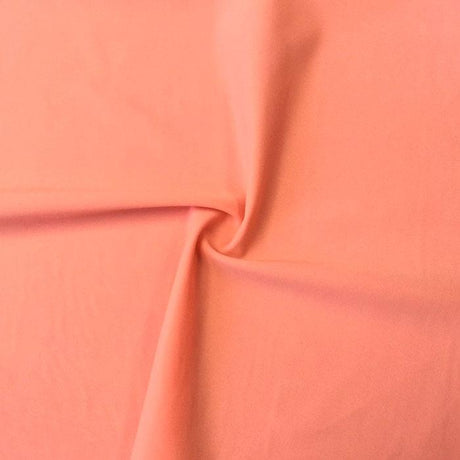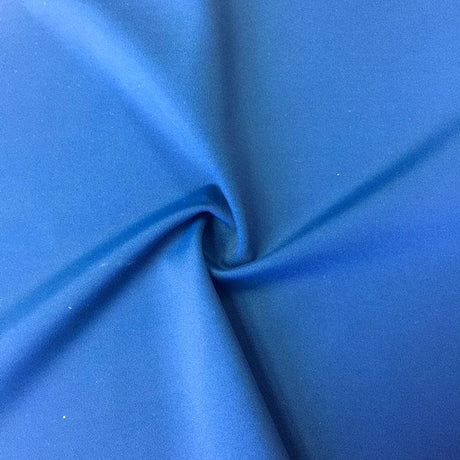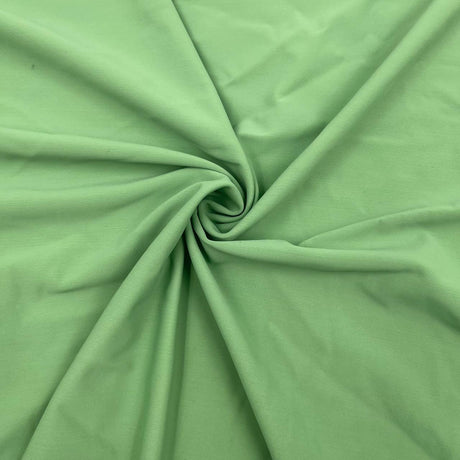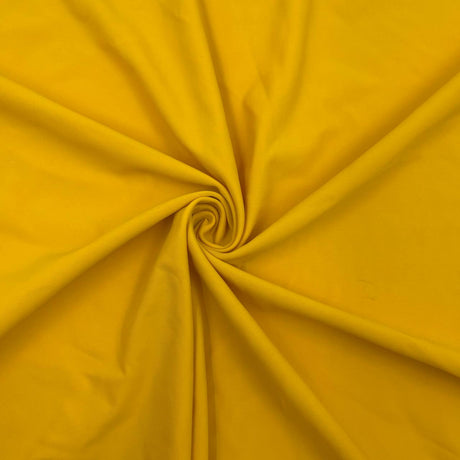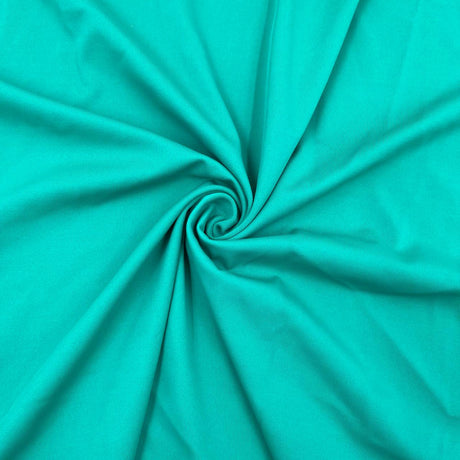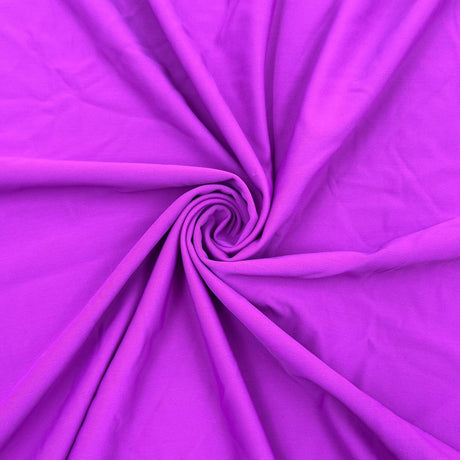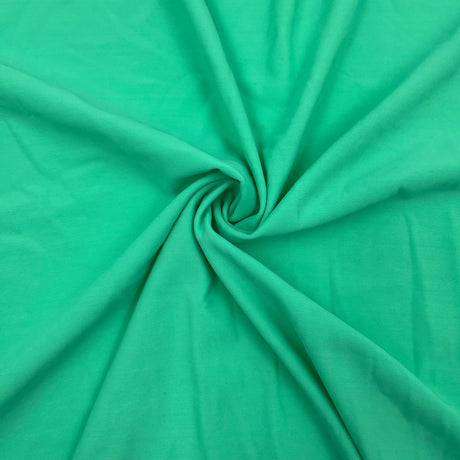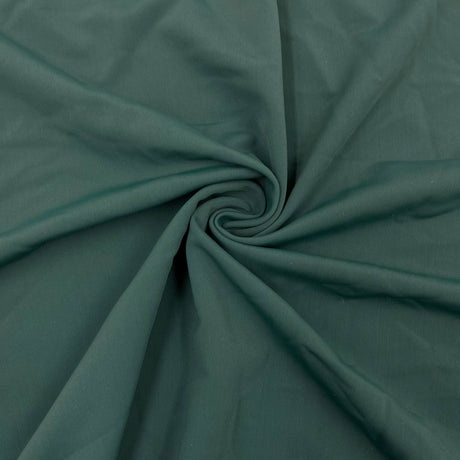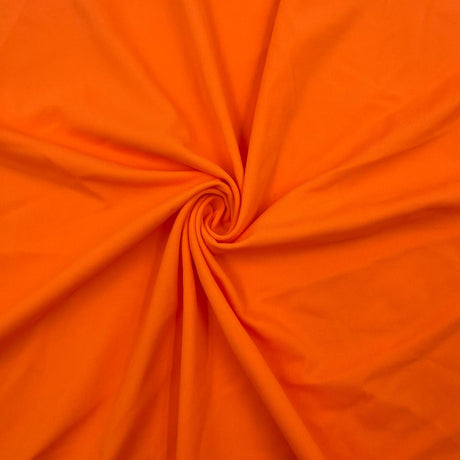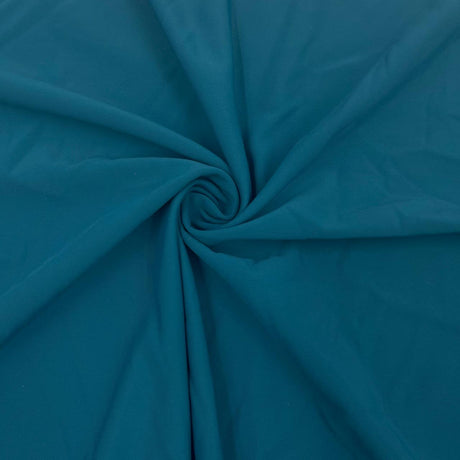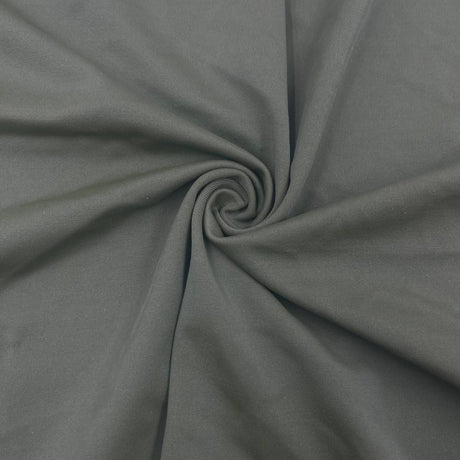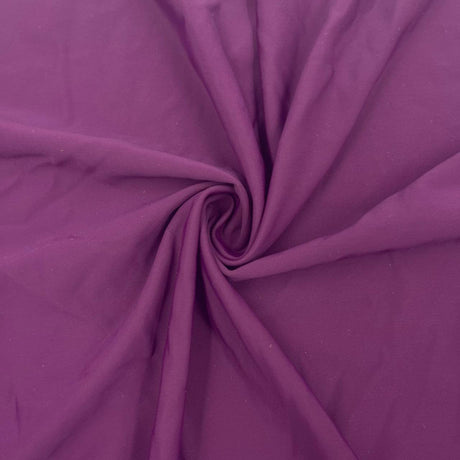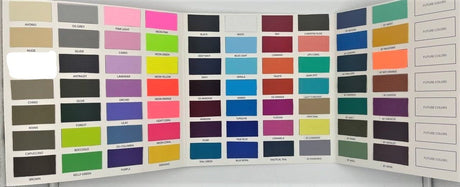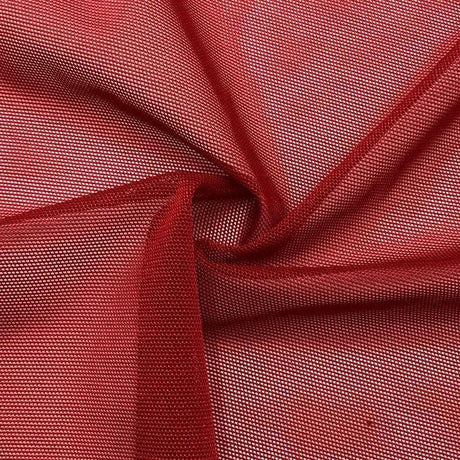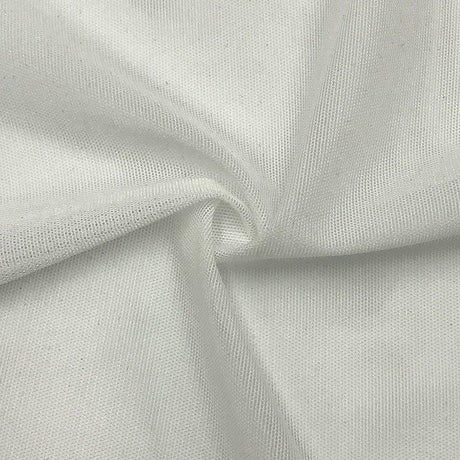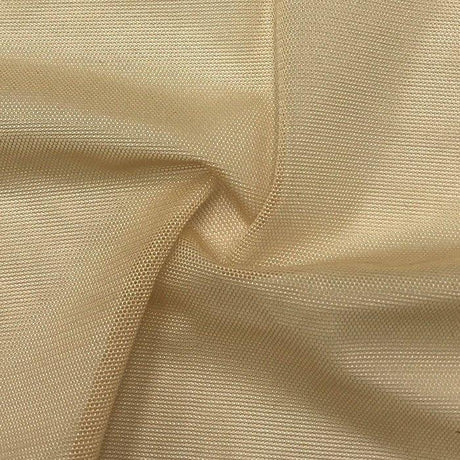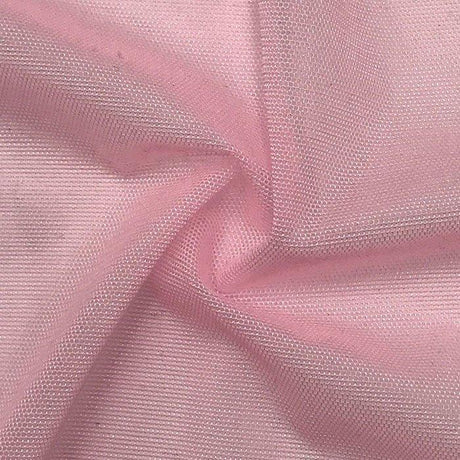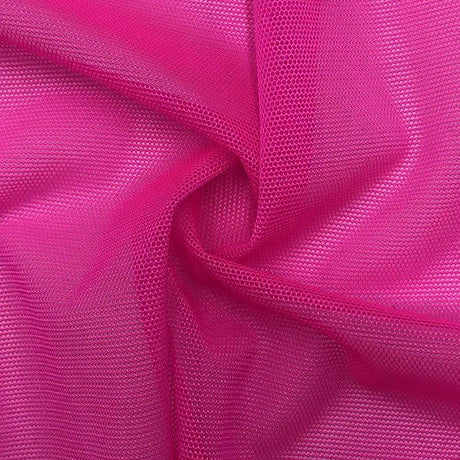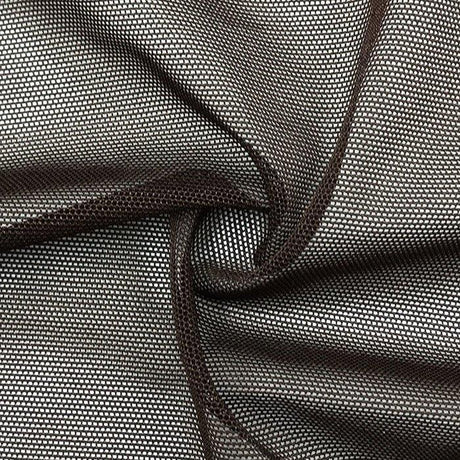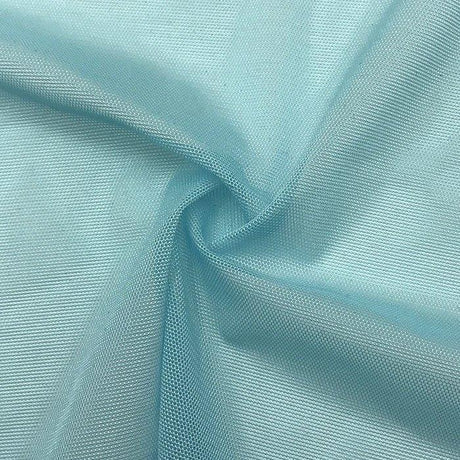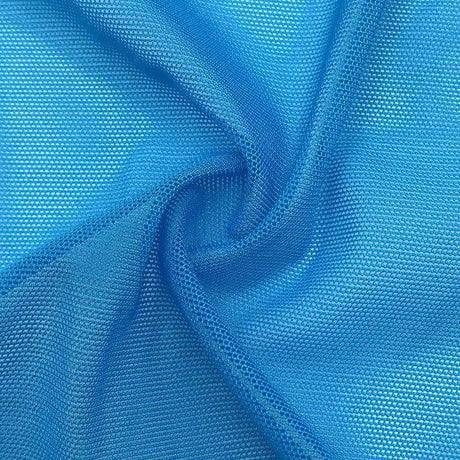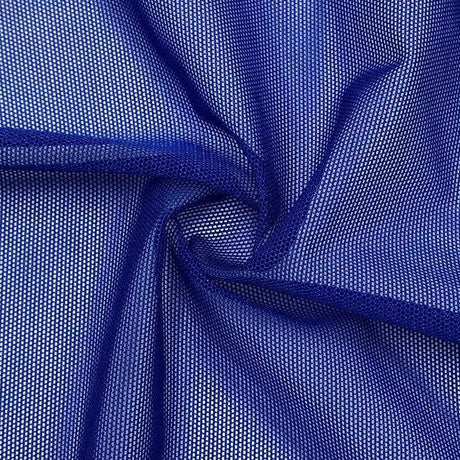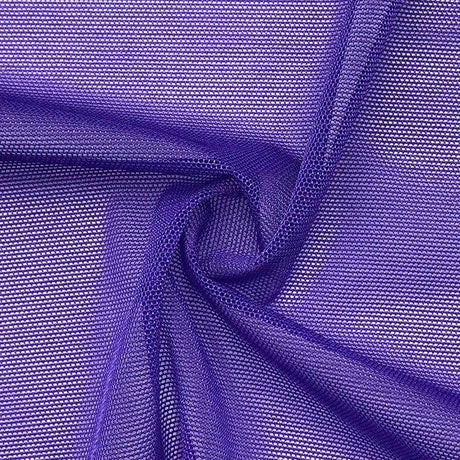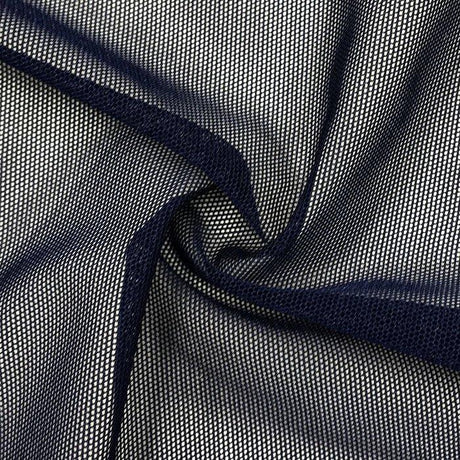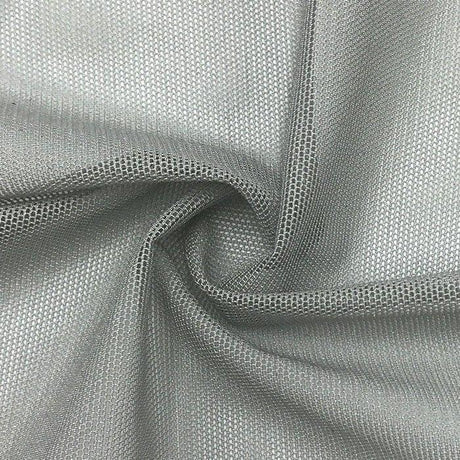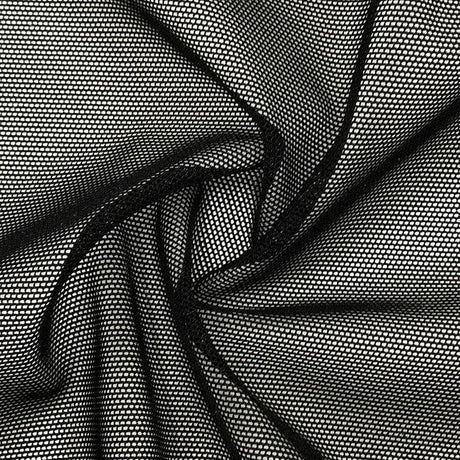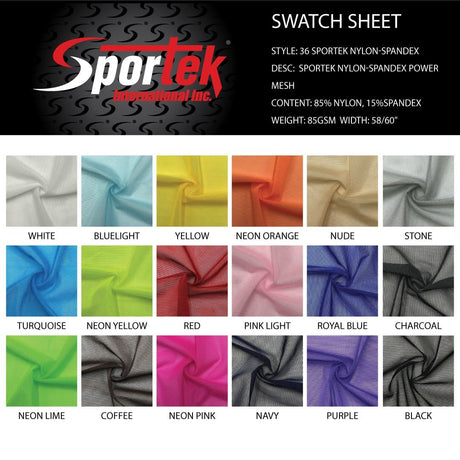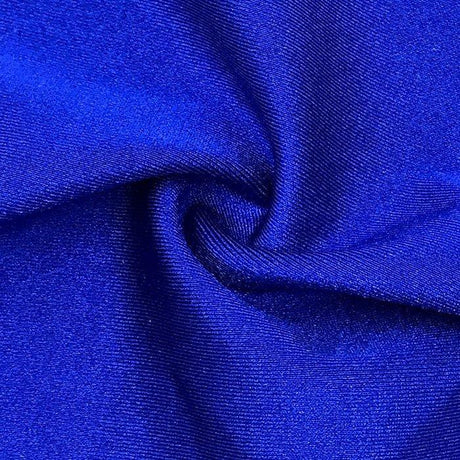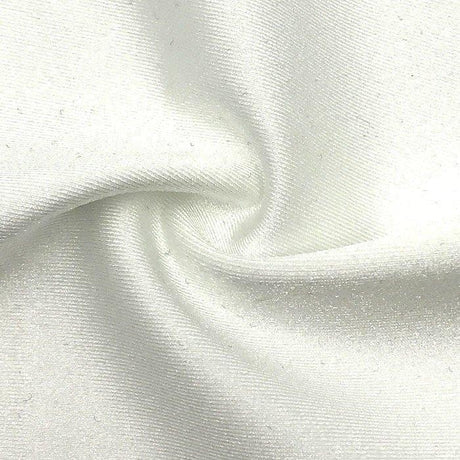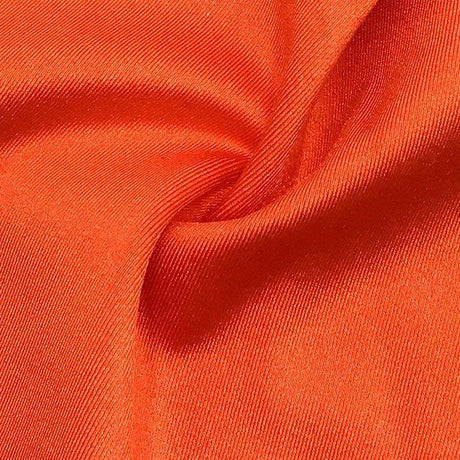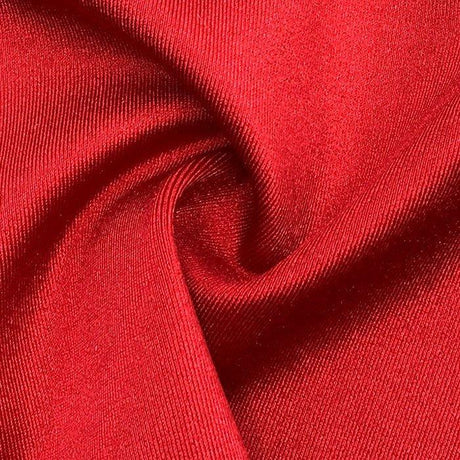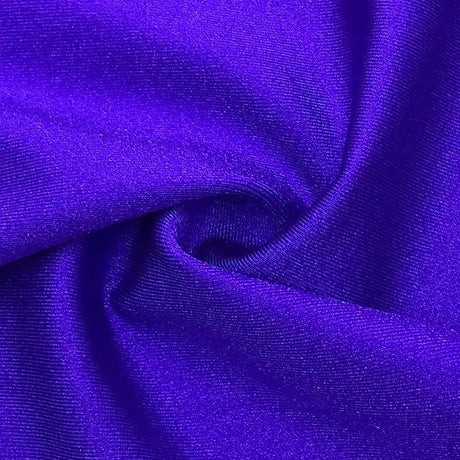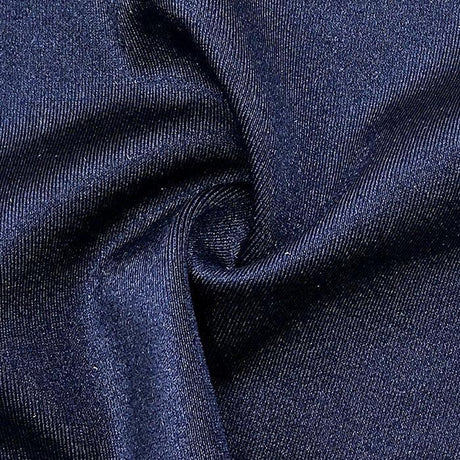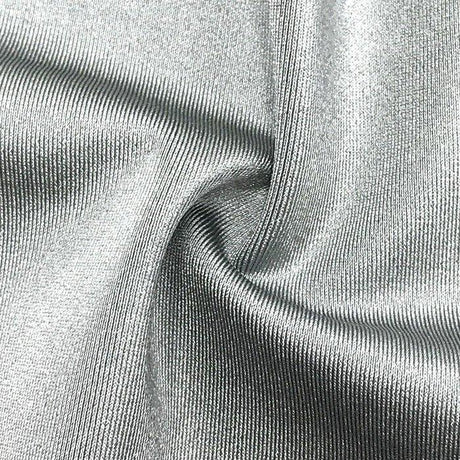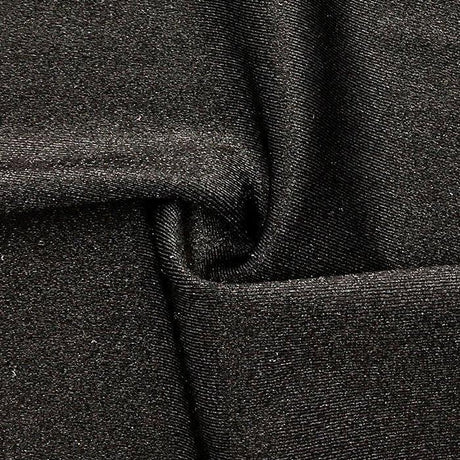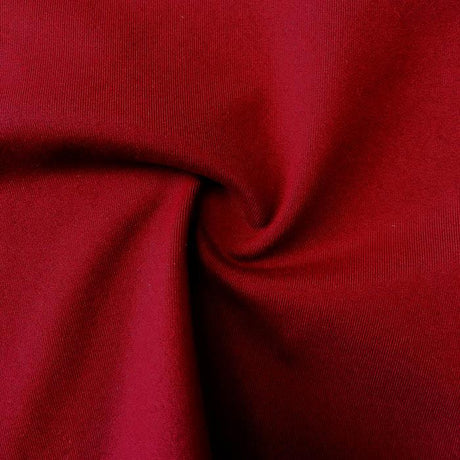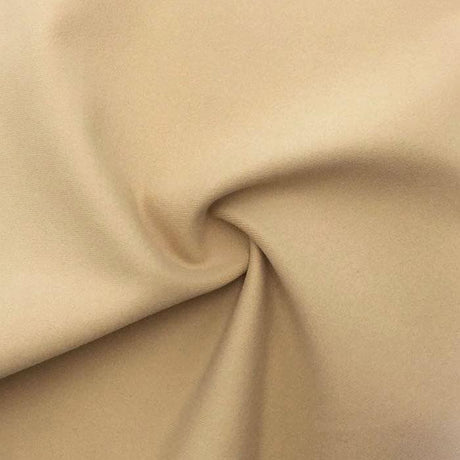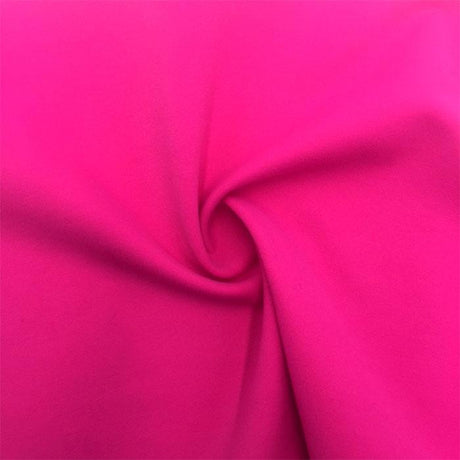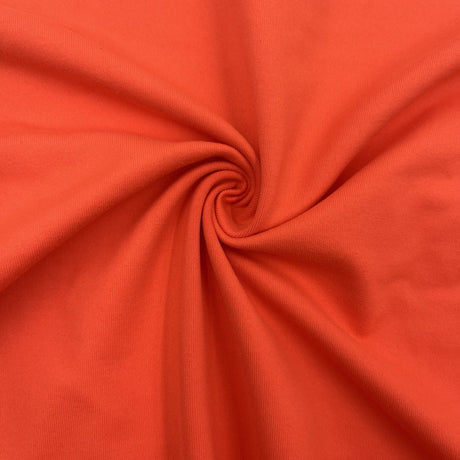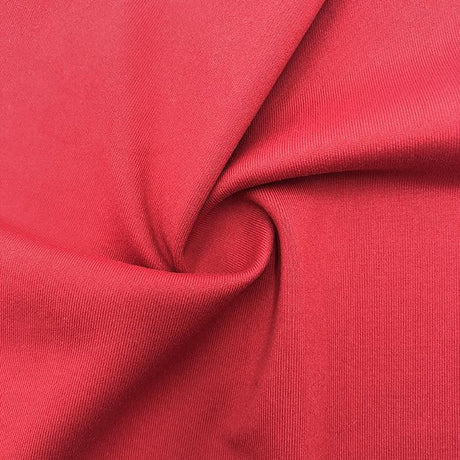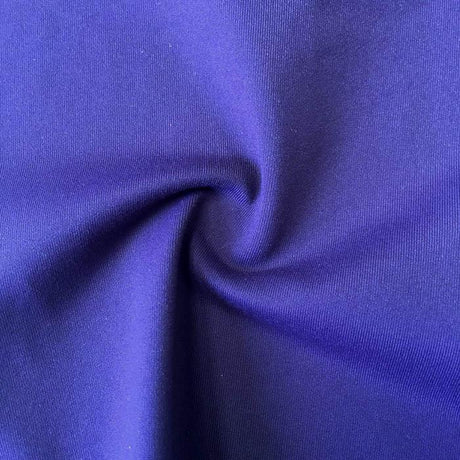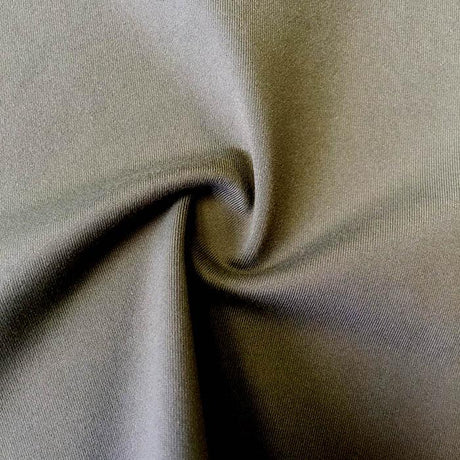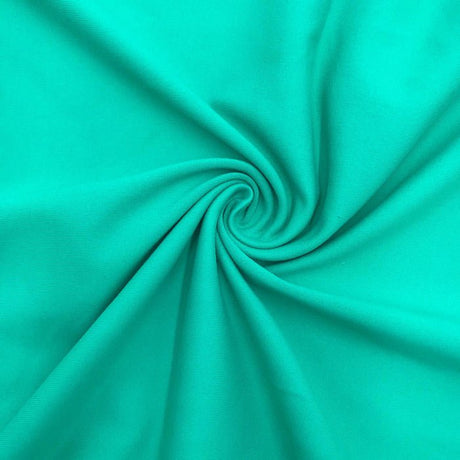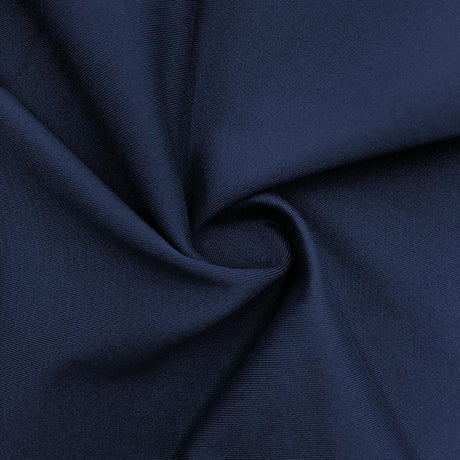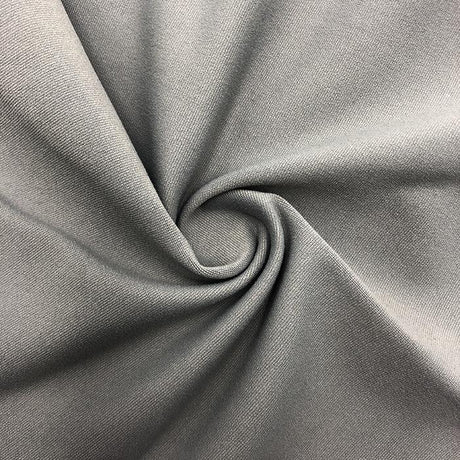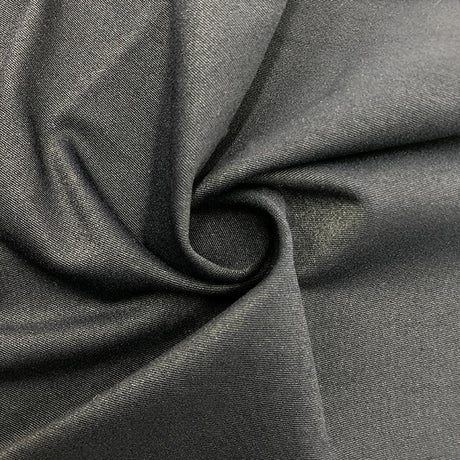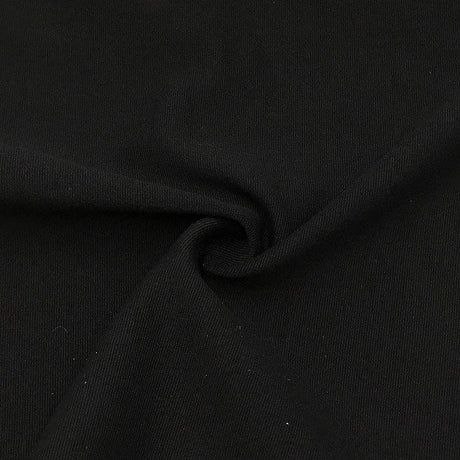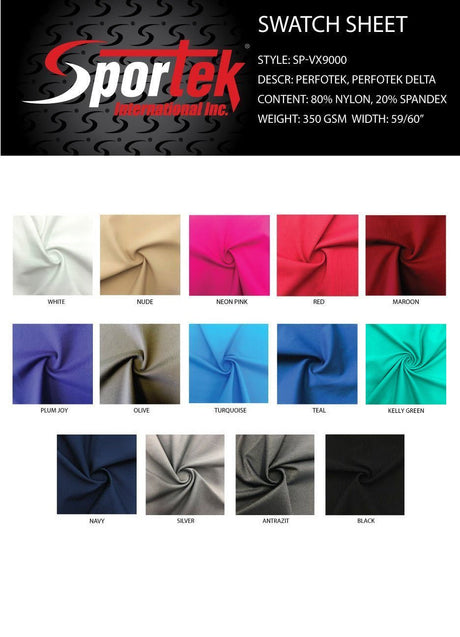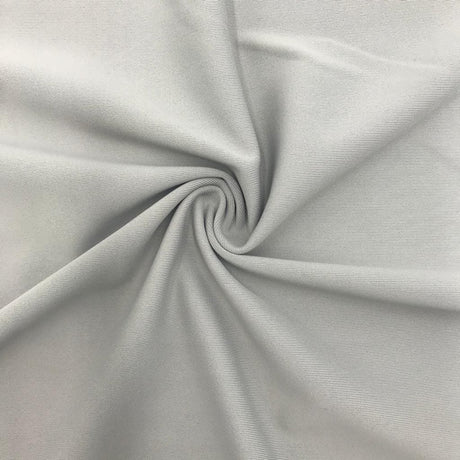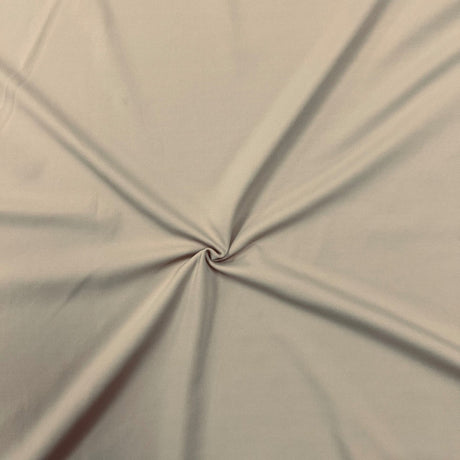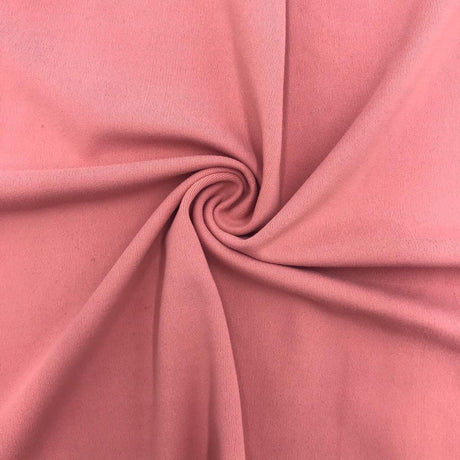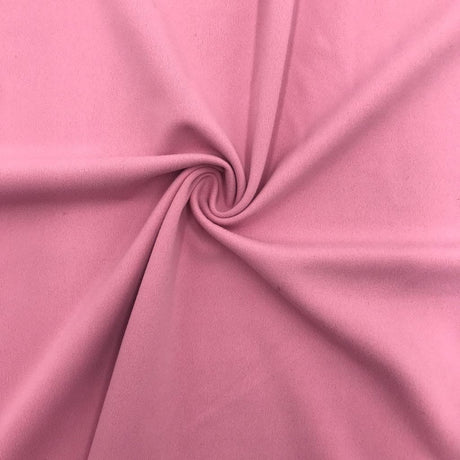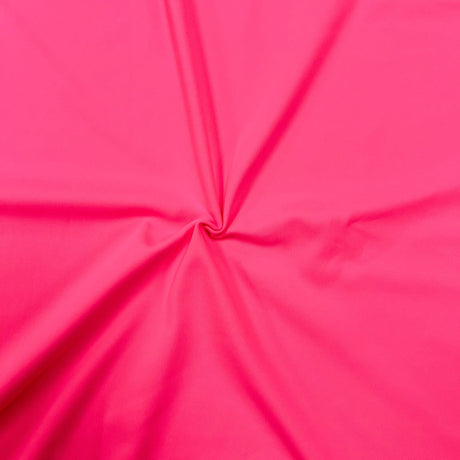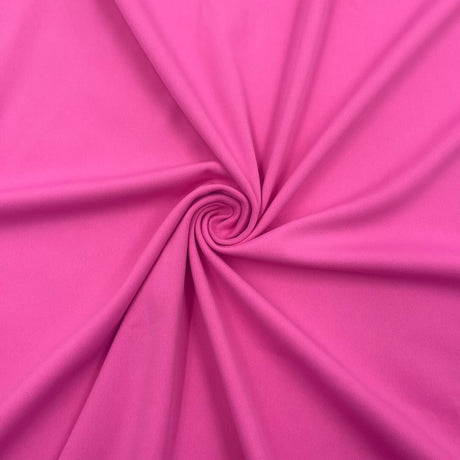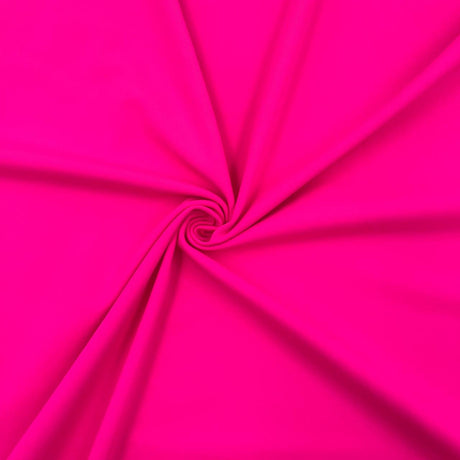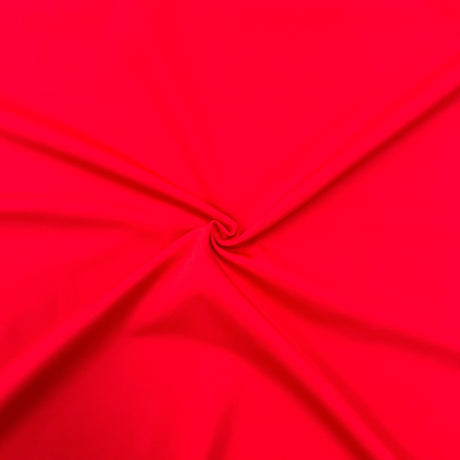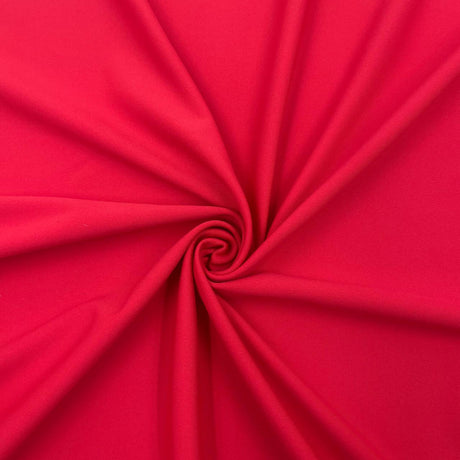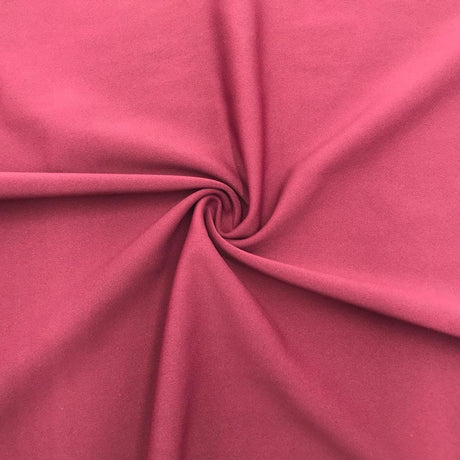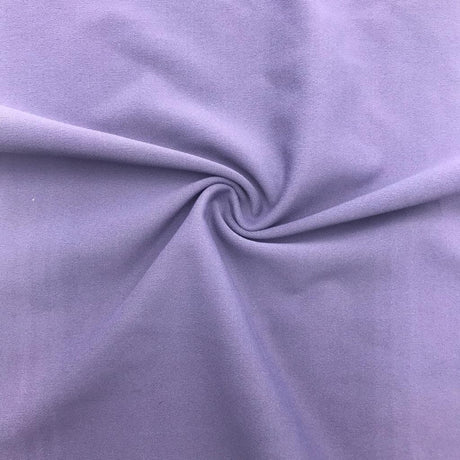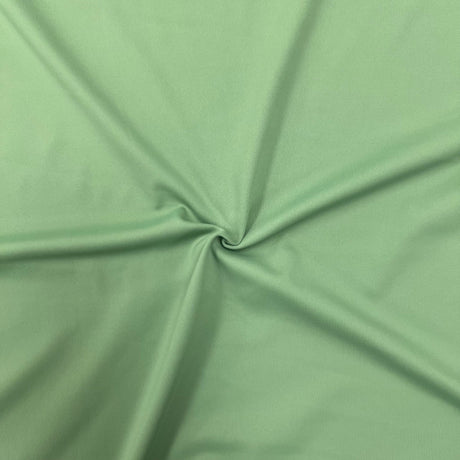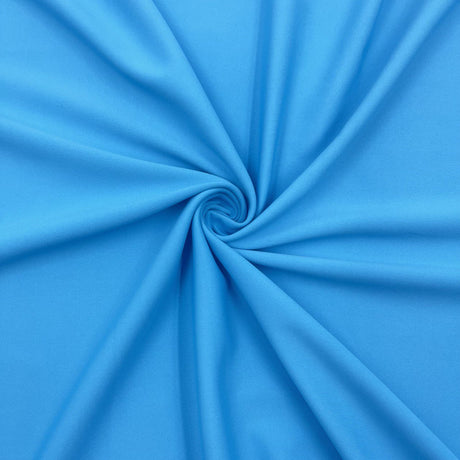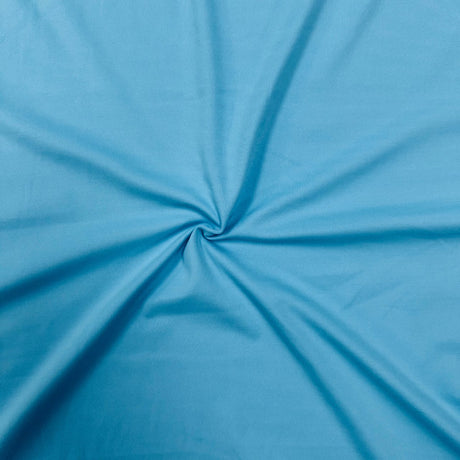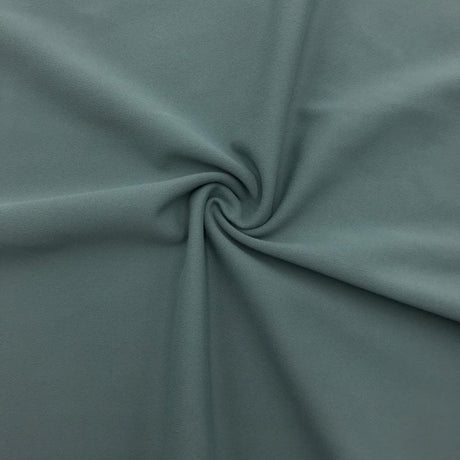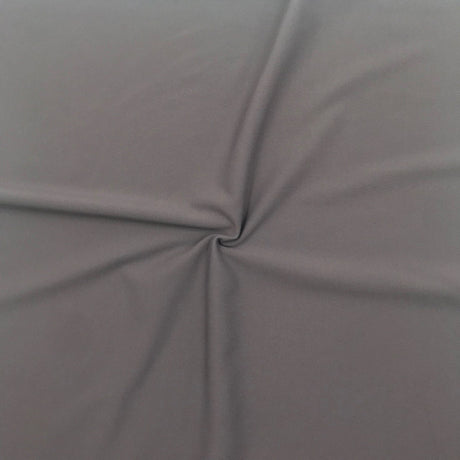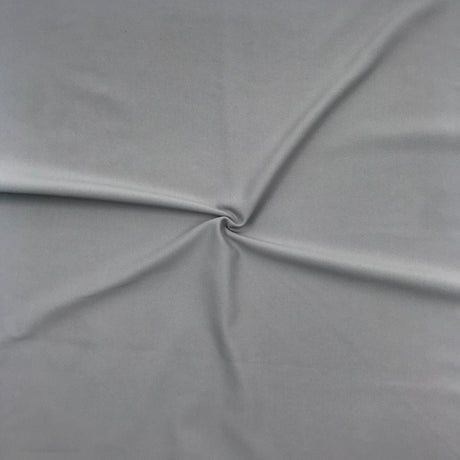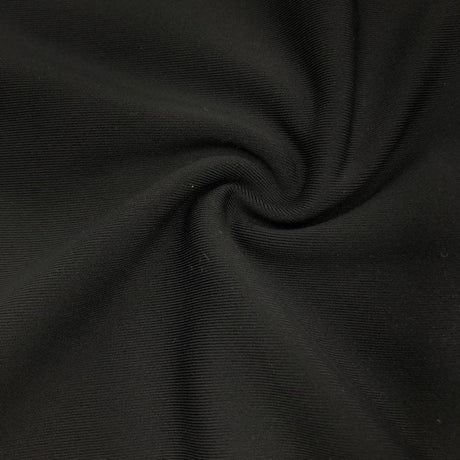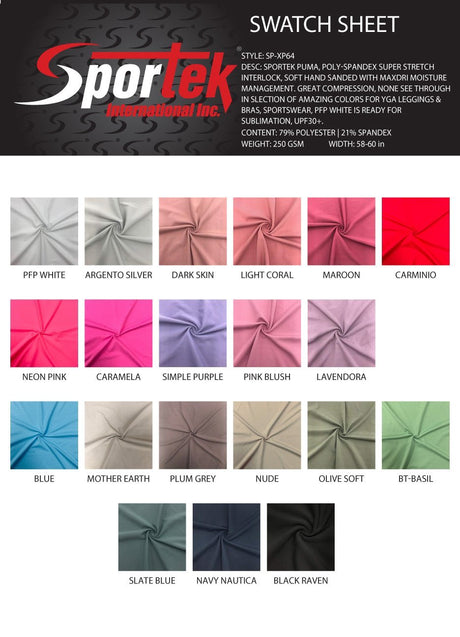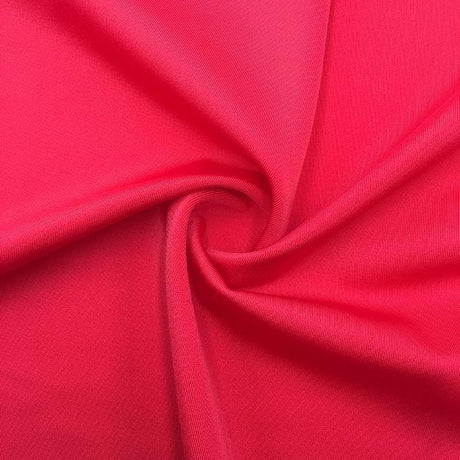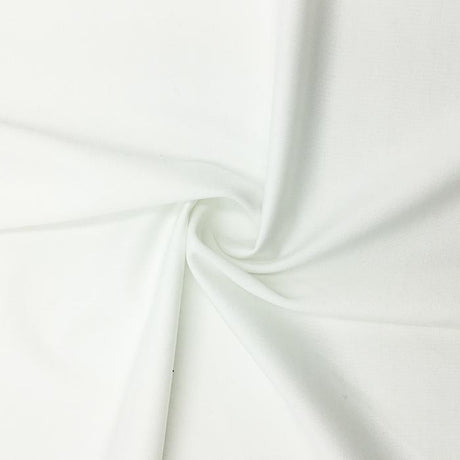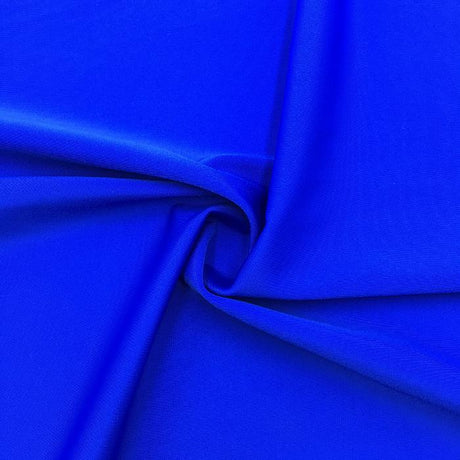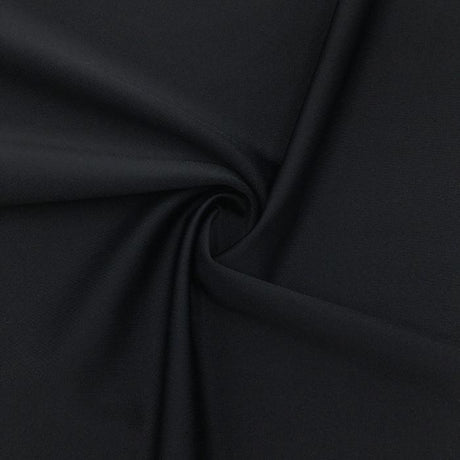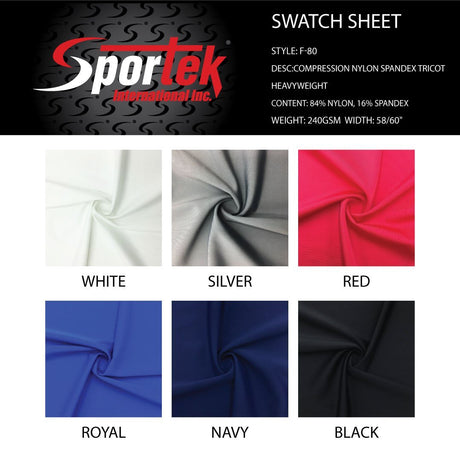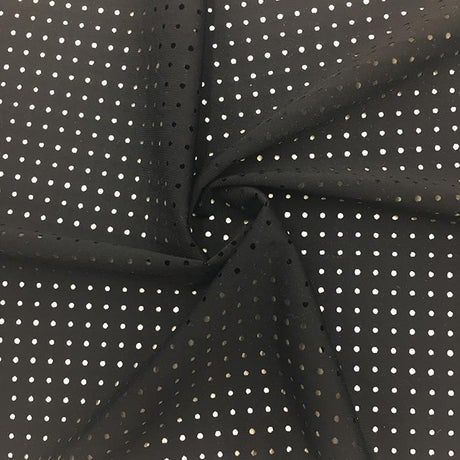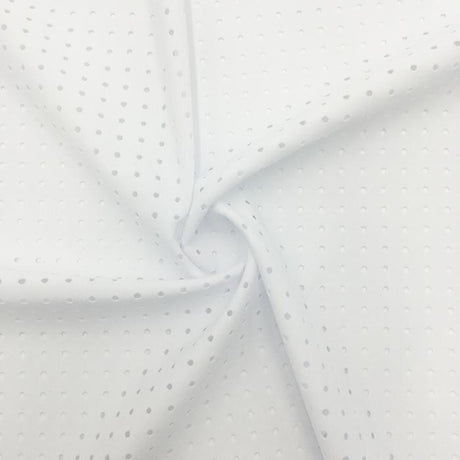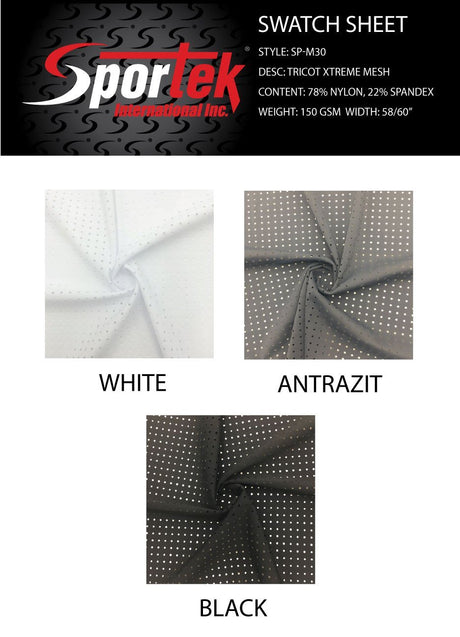Supplex fabric is a game-changer in the textile world, offering the cozy cotton feel we love combined with the high-performance properties of modern synthetics. This guide explores everything about Supplex – from its unique fiber composition and characteristics to how it stacks up against cotton and other fabrics. We’ll highlight its key benefits (like softness, breathability, quick-drying, fade resistance, and toughness), common use cases in activewear and beyond, and practical tips for sewing and caring for Supplex. Whether you’re a fashion designer or a DIY enthusiast, read on to discover why Supplex is prized for “cotton comfort with performance power” – and how to select the best Supplex fabric by the yard for your projects.
What is Supplex Fabric?
Supplex is a trademarked nylon fabric originally developed by DuPont (now part of Invista/The LYCRA Company) in the 1980s to bridge the gap between natural and synthetic materials. In essence, Supplex is a specialized form of nylon engineered to look and feel like cotton while delivering the advantages of technical fibers. It’s created by extruding nylon through extremely fine holes to produce ultra-fine filaments, which are then bundled together into yarn. This process yields a fabric that is remarkably soft and flexible – much softer than conventional nylon – yet retains nylon’s legendary strength and resilience. In fact, Supplex nylon is measured to be about 26–36% softer than standard nylon, giving it a pleasant, natural hand-feel without the plasticky touch typical of some synthetics.
Fiber Composition: Pure Supplex fiber is a form of nylon 6 (polyamide) known for its fineness and cotton-like texture. Often, Supplex is used in knit fabrics blended with spandex (such as Lycra) to add stretch and recovery. For example, a common activewear composition is Supplex nylon blended with 10–15% Lycra spandex for a four-way stretch fabric. One popular blend is 88% Supplex and 12% Lycra, which yields a heavy-duty jersey around 300 GSM ideal for leggings and yoga pants. The Supplex provides the soft, cottony feel and durability, while the Lycra gives excellent stretch and shape retention. Supplex can also come in woven form (without stretch) for applications like jackets or hiking pants – these woven Supplex fabrics are durable, wind-resistant, and often treated with water-repellent finishes for outdoor use.
Key Characteristics: Thanks to its fine filament construction, Supplex fabric has a soft, natural touch similar to cotton but with far better performance. It is breathable, allowing air flow to keep you comfortable, and it wicks moisture to keep your skin dry. Unlike regular cotton, Supplex does not easily pill, wrinkle, or lose its shape – it’s designed to stay smooth and new-looking even after many wears and washes. The material is also easy-care and long-lasting, making it popular in garments that need to endure sweat, movement, and frequent laundering.
Supplex vs. Cotton: Natural Comfort Meets Performance
One of Supplex’s main selling points is how well it mimics the comfort of cotton while overcoming cotton’s drawbacks. If you love the soft, breathable feel of cotton but need something more gym- and outdoor-friendly, Supplex fabric offers “the best of both worlds: the comfort of cotton and the benefits of advanced fabric technology.”
Here’s how Supplex compares to cotton in key aspects:
- Softness & Touch: Supplex feels naturally soft and gentle on the skin, very much like a premium cotton knit. It lacks the slick or shiny feel that some synthetics have, so clothing made with Supplex is cozy and comfortable from the first wear. Many people would be hard-pressed to tell a Supplex jersey apart from cotton just by touch.
- Breathability: Both cotton and Supplex are breathable, but cotton soaks up moisture (it’s highly hydrophilic) and can stay wet for a long time, which is not ideal for activewear. Supplex, on the other hand, is moisture-wicking and quick-drying, moving sweat to the fabric surface where it evaporates faster. This means you won’t feel clammy during workouts, and your Supplex gear will dry much sooner than a comparable cotton garment.
- Moisture & Drying: As noted, cotton can hold 25 times its weight in water and dries very slowly – think of a heavy wet cotton T-shirt. Supplex was engineered to solve this; it dries far faster than cotton, keeping you comfortable during exercise or if you get caught in rain. No more slogging around in a soggy cotton sweatshirt – Supplex will shed water and sweat quickly.
- Durability & Strength: While cotton tends to wear out or tear with heavy use (and weakens when wet), Supplex is exceptionally durable and abrasion-resistant. The nylon fibers give it strength to withstand intense activities and repeated washings without thinning out or developing holes. You can expect Supplex activewear to maintain its shape and integrity longer than cotton equivalents.
- Shrinkage & Wrinkling: Cotton garments often shrink in the wash and easily wrinkle. Supplex does not shrink and is largely wrinkle-resistant, keeping a smooth appearance with minimal care. You can toss a Supplex hoodie in your gym bag and pull it out later without it looking like a crumpled mess – it will still look presentable.
- Color Fade: Anyone who’s owned a favorite cotton t-shirt knows that repeated washing and sun exposure can fade the color. Supplex fabric is fade-resistant, holding its dye much better over time than cotton. The fibers are engineered to retain color saturation, so your vibrant Supplex leggings won’t easily wash out or dull in sunlight. (Supplex even provides some UV protection, helping shield both the fabric and your skin from the sun.)
In short, Supplex offers the comfort properties of cotton (softness, breathability) without its weaknesses (slow drying, shrinkage, wear-and-tear). This makes Supplex an ideal choice for active lifestyles where cotton just can’t keep up with the performance demands.
Supplex vs. Traditional Nylon and Other Synthetics
How does Supplex compare to other synthetic performance fabrics like standard nylon or polyester blends? Here’s a look at what sets Supplex apart:
- Traditional Nylon: Conventional nylon (like the type used in windbreakers or backpacks) is known for strength and light weight, but it often has a plasticky feel and sheen, and can be stiffer against the skin. Supplex, by contrast, was specifically created to improve nylon’s apparel suitability. By using ultra-fine nylon filaments, Supplex comes out much softer and matte, with a cotton-like look. It retains nylon’s durability but without the slick, hard hand-feel. Supplex is also less prone to pilling than standard nylon and keeps its shape and softness wash after wash. In essence, Supplex is nylon – but a better nylon for clothing. It’s the answer to the challenge of making nylon comfortable enough for all-day wear.
- Polyester Activewear Fabrics: Polyester (often in polyester-spandex blends) is another common performance fabric. It shares qualities like moisture-wicking and quick drying. However, polyester can sometimes feel less soft or a bit artificial to the touch, and it has a tendency to retain odors because it can harbor bacteria in its fibers. Supplex nylon tends to be more odor-resistant – it doesn’t hold onto smells as much, partly because it’s less hospitable to bacteria growth. Many wearers also find Supplex has a nicer, more natural drape compared to polyester knits. Additionally, Supplex’s color retention is superb, whereas some polyester fabrics can dull over time or suffer when exposed to UV unless specially treated.
- Other Branded Nylons (e.g. Tactel): Supplex isn’t the only soft nylon developed for apparel – for example, Tactel is another Invista trademark for a silky, fast-drying nylon often used in intimates and activewear. These fabrics share similarities. Tactel is noted to dry about 8 times faster than cotton and is also very soft. The difference is often in branding and specific fiber finish. Both Supplex and Tactel are high-quality nylon fibers; a key takeaway is that Supplex was designed to have a cottony matte look, whereas Tactel can feel more smooth or silky. In practice, both perform well, but Supplex’s “cotton feel” niche makes it especially popular for sport and athleisure wear that aims for a natural aesthetic.
- Spandex Blends: It’s important to note that most Supplex garments are blends – typically combining Supplex nylon with spandex (Lycra) for stretch. This isn’t a disadvantage; in fact, adding 10–15% spandex gives the fabric four-way elasticity and excellent recovery (bounce-back), crucial for activewear. A high-quality Supplex blend will leverage the strengths of both fibers: the soft, tough Supplex plus the flexible, shape-hugging Lycra. The result is a fabric that moves with you during yoga or running, but won’t become baggy or saggy. When comparing Supplex blends to other stretch fabrics (like a cotton/Lycra jersey or a poly/Lycra knit), the Supplex blend will usually be stronger, more durable, and more moisture-wicking than cotton blends, and often softer and more breathable than polyester blends. In short, it’s a top-tier option for performance stretch fabric.
Key Benefits of Supplex Fabric
Why do sewists and athletes alike seek out Supplex? Here are the key benefits of Supplex fabric that make it stand out:
- Cotton-Like Softness: Supplex is celebrated for its soft, natural feel. It was engineered to be as soft as premium cotton, providing a gentle touch against the skin. There’s no plastic feel or crunchiness – Supplex garments are cozy from day one. This softness makes it perfect for any clothing that touches the body, from leggings and sports bras to casual t-shirts. Even though it’s a synthetic, Supplex’s hand-feel is invitingly plush, often surprising those who assume all nylon is stiff or scratchy.
- Breathable & Moisture-Wicking: One of the reasons Supplex is ideal for activewear is its excellent breathability and moisture management. The fabric allows perspiration to pass through and wicks sweat away from your body, keeping you dry. Unlike non-wicking fabrics (which get soaked and stay that way), Supplex transports moisture to the surface where it can evaporate. This feature helps regulate your body temperature during workouts – you stay cooler and more comfortable. It’s a similar concept to Dri-Fit or Coolmax, but with that Supplex signature softness. Many Supplex fabrics also incorporate special wicking finishes or technologies (for example, some are marketed with “MaxDri” moisture management), further enhancing their sweat-battling power.
- Quick-Drying: Supplex fabric dries rapidly, much faster than cotton. If you wash a pair of Supplex yoga pants and a cotton jersey tee at the same time, the Supplex pants will likely be dry well before the cotton tee. This quick-dry property is a huge benefit for activewear, swimwear, and travel clothing. You can wash your Supplex garments in the evening and they’ll be ready to wear by morning – or if you get caught in a rain shower on a hike, your Supplex jacket will dry out in a jiffy. Quick drying also means sweat doesn’t linger, so you avoid that cold, clammy feeling after exercise. It’s a fabric that keeps up with you on the go.
- Durability & Abrasion Resistance: Supplex is tough. The nylon fibers give it high tensile strength and abrasion resistance, meaning it can handle friction and strain that might rip or wear down other fabrics. For example, knees of Supplex leggings won’t thin out quickly even if you’re doing lots of floor exercises, and a Supplex running top can rub under a backpack strap without abrading as cotton might. This durability makes Supplex garments long-lasting – they maintain their integrity through many workouts, wash cycles, and adventures. It’s a popular choice for outdoor gear because it can withstand rugged use (think rock-climbing pants or trail running shorts that brush against rough surfaces). If you need a fabric that “plays hard,” Supplex delivers.
- Fade-Resistant Color: Vivid colors stay vivid on Supplex. The fabric is fade-resistant, holding its color even after repeated washing and sun exposure. This is a big plus for activewear, which often comes in rich colors or prints that you don’t want to dull out. Supplex’s ability to retain color means your black Supplex leggings won’t fade to grey after a season, and bright patterns remain eye-catching. Additionally, Supplex offers some UV resistance, which not only protects the wearer to a degree but also helps the fabric itself avoid sun damage. The bottom line: Supplex clothing looks newer for longer.
- Shape & Wrinkle Resistance: Thanks to the stability of nylon and often a touch of spandex, Supplex garments are great at holding their shape. Your Supplex yoga pants won’t bag out at the knees, and a Supplex jacket won’t sag or distort over time. The fabric has good recovery and resilience. It’s also largely wrinkle-free – pull a Supplex shirt out of your gym bag and it’ll look just fine with no ironing needed. This makes it superb for travel or packing in a hurry. Even when crushed, the wrinkles tend to fall out quickly (and any remaining can be smoothed by the heat of your hand or body). For those who “live” in their athletic wear all day, it means you remain polished, not sloppy-looking.
- Easy Care: Supplex fabric is simple to care for and very forgiving. It’s machine washable and doesn’t require any special treatment like dry cleaning. It doesn’t shrink, so you don’t have to baby it in the laundry. In fact, one reason it’s loved for sports and everyday clothes is that you can wash and wear it repeatedly without it losing performance. (We’ll cover specific care tips later, but generally it’s wash cold and hang or tumble dry low – and it comes out ready to go again.) This easy-care nature, combined with its other benefits, makes Supplex a low-hassle fabric for busy lifestyles.
- Additional Perks: Depending on the manufacturer or finish, Supplex fabrics may also boast extras like water repellency, anti-bacterial properties, or odor resistance. For instance, some Supplex materials are treated to be water-resistant (useful for outerwear), and nylon inherently absorbs less odor than many polyesters. Some high-end Supplex blends even have chlorine resistance, allowing them to be used in swimwear without degrading quickly. Always check the specific product details – but in general, Supplex is a high-tech fabric, and these bonuses further enhance its appeal in performance apparel.
Common Uses: From Activewear to Everyday Comfort
Thanks to its versatile nature, Supplex is used in a wide range of apparel and textile products. It truly lives up to its reputation of being suitable for both activewear and athleisure, as well as crossing over into casual wear and even some unconventional uses. Here are the most common (and a few surprising) uses of Supplex fabric:
- Activewear & Gym Clothes: This is where Supplex shines brightest. It’s a go-to fabric for athletic wear – you’ll find it in leggings, yoga pants, and running tights, where its stretch and sweat-wicking are invaluable. Many high-quality yoga pants on the market tout “Supplex-Lycra” fabric because it provides a supportive compression fit with soft comfort. Sports bras and athletic tops are another big category; Supplex’s breathability keeps you cool, and its durability withstands constant movement and stretching. Athletic shorts and joggers also benefit from Supplex, especially in warm climates, because the fabric won’t get drenched with sweat. Essentially, if it’s something you wear to work out, Supplex is an excellent fabric choice for it. Brands and sewists choose Supplex to deliver professional-grade gym wear that can compete with (or often exceed) the performance of big-name retail products.
- Athleisure & Everyday Apparel: Beyond the gym, Supplex is popular in athleisure – casual clothing that doubles as workout wear. Think of yoga pants worn for errands, comfortable leggings for travel, hoodies and jackets, or even dresses and skirts that look chic but feel as comfy as activewear. Since Supplex fabric offers that nice matte finish and cottony look, these pieces don’t scream “gym clothes” even though they have all the performance benefits. For example, Supplex has been used to sew stylish pencil skirts, blazers, and summer dresses that are both comfortable and polished. A Supplex zip-up hoodie or track jacket makes a great lightweight layer that moves and breathes well. Even t-shirts or tank tops can be made of a Supplex knit for a softer, quick-dry upgrade over standard cotton tees.
- Outdoor and Performance Gear: Supplex finds its way into outdoor apparel too. Its durability and quick-dry nature are perfect for hiking pants, trail shorts, and outdoor jackets. In fact, woven Supplex nylon is famously used for things like “baggies” style shorts, windbreakers, and travel pants because it’s strong yet soft and often water-resistant. If you’ve heard of those nylon hiking pants that feel like cotton poplin but perform like nylon – that’s the idea here. Supplex pants won’t chafe or overheat you on a hike, and if you sweat or ford a stream, they dry off quickly. Moreover, because Supplex resists fading, it’s great for outdoor use under the sun (your gear stays looking good). Some swimwear and surf wear also utilize Supplex blends, since it tolerates water and chlorine fairly well and provides a snug, shape-keeping fit for items like rash guards or swim leggings (though for prolonged chlorine exposure, a specialized swim fabric might be preferred). There’s even Supplex with UPF (ultraviolet protection) ratings for sun-protective clothing, useful for outdoor enthusiasts.
- Accessories & Gear: Designers have extended Supplex’s use to various accessories and equipment. For example, you might find Supplex as the lining of bags or backpacks, where a soft but tough fabric is needed. It can also appear in headbands, wristbands, and caps for sports, since it absorbs sweat but dries fast. Some travel accessories like packing cubes or lightweight duffel bags use woven Supplex to keep them light yet durable. Its abrasion resistance and easy-care make it a smart choice for such items.
- Upholstery and Interior Decor (Unexpected Use): Interestingly, Supplex has even found a niche in home décor and upholstery in recent years. Some innovative designers have used Supplex fabric to upholster chairs, sofas, and ottomans, appreciating its combination of softness and toughness. Because Supplex doesn’t easily stain and has a nice feel, it can work for furniture that gets heavy use – think family room seating that you want to be cozy but also kid- and pet-proof. It’s not a traditional upholstery fabric, but its ability to resist wear and fading can be an asset in creative interior design. Supplex has also been mentioned in use for creative curtains or stage backdrops, likely because of its flowing drape and colorfastness. While these uses are more specialized, they underline just how versatile Supplex truly is.
In summary, Supplex’s “jack-of-all-trades” nature means it’s used in everything from the gym to the great outdoors, and from your casual wardrobe to even home furnishings. If you need a fabric that can handle an active or demanding application but still feel nice to the touch, Supplex is often the answer. It’s incredibly versatile, living up to its reputation as a fabric that offers cotton comfort with advanced performance across countless scenarios.
Sewing with Supplex: Tips for Designers and DIYers
For those looking to sew their own activewear or projects with Supplex, you’ll be happy to know that it’s generally friendly to work with, especially the knit versions. Here are some practical tips on cutting, sewing, and handling Supplex fabric to achieve professional results:
- Cutting the Fabric: Supplex knit fabrics (especially those with Lycra) have a moderate stretch and a sturdy weight. It’s best to use a sharp rotary cutter or fabric scissors to get clean, even edges. The material typically doesn’t fray (knit Supplex won’t unravel), but it can curl slightly at the edges after cutting, due to the spandex content. Using pattern weights and cutting on a single layer (if your pattern allows) can help keep everything flat. Marking can be done with chalk or washable marker – Supplex is opaque and takes markings well (test on a scrap to be sure it washes out). If you’re cutting a woven Supplex (non-stretch), treat it like a lightweight canvas or nylon – it may ravel a bit, so use pinking shears or serge the edges if needed.
- Needles and Thread: Always opt for a stretch or ballpoint needle when sewing Supplex knits. A size 75/11 or 80/12 stretch needle works well. Stretch/ballpoint needles have a slightly rounded tip that slides between the fibers (rather than piercing them), preventing snags or runs in the knit and avoiding skipped stitches. For thread, a good quality polyester thread is ideal (poly thread has the strength and flexibility needed for stretchy fabrics; cotton thread might break when the fabric stretches). If you experience skipped stitches even with a stretch needle, try a new needle (Supplex’s toughness can dull needles after lots of sewing) or a slight tension adjustment.
- Stitching Techniques: Because Supplex is often used in stretch garments, you want seams that can stretch without popping. If you have a serger/overlock machine, that’s the quickest way to sew Supplex seams – the 4-thread overlock stitch is perfect for durable, stretchable seams in activewear. If using a regular sewing machine, choose a stretch stitch or narrow zig-zag stitch for construction. A common approach is a medium zig-zag (e.g. 0.5–1.0 mm width by 2.5 mm length) for seams, or use the machine’s lightning bolt stitch (stretch stitch) if available. For hemming, a twin needle can create a nice stretchy hem, or you can use a coverstitch if you have access to one (common in professional activewear, but not required). Avoid straight stitches on seams that need to stretch – those will likely snap under tension.
- Machine Settings: Supplex’s knit can sometimes be thick or slightly spongy, especially in multiple layers, which can cause the fabric to stretch or ripple while sewing. To counter this, you can lower the presser foot pressure if your machine allows (too much pressure can stretch the fabric as it feeds, causing wavy seams). Also, consider using a walking foot attachment for your sewing machine – this helps feed the Supplex evenly, preventing the bottom layer from stretching more than the top. If you notice your seams tunneling or waving, a combination of adjusting foot pressure, using a walking foot, or even spraying a bit of temporary fabric adhesive to stabilize seams before sewing can help. Another trick: use Wonder Clips or pins generously to hold seams, as the fabric’s slickness can let layers shift; clips are great because they don’t prick holes in the fabric.
- Sewing Seams & Finishes: Supplex responds well to standard seam finishes. Serged seams are ideal (and finish the raw edge nicely). If you don’t have a serger, a zig-zag trimmed seam works, or even French seams for the woven variety if you want to encase raw edges. The good news is knit Supplex doesn’t fray, so you technically don’t need to finish the edges at all – they won’t unravel. However, because it’s a synthetic, a cut edge can sometimes curl or feel a bit thick, so a tidy finish is still nice for comfort. For topstitching (say, around a neckline or pocket), a zig-zag or twin needle stitch in a longer length will lay flat and stretch. Bar-tacking can reinforce areas like pocket corners or the ends of elastic, but do use a zig-zag bar-tack (many machines have this built-in) so it has some give.
- Elastic and Stretch: Many activewear projects will involve inserting elastic (waistbands, leg openings, etc.). Supplex works well with elastic, especially when you use soft knit elastic which matches the fabric’s flexibility. When creating something like a yoga pant waistband, you can actually use a wide band of Supplex/Lycra itself (doubled over) as a self-fabric waistband with no elastic, and it will have ample stretch and recovery to hold up the garment – one of the perks of a high Lycra content. If you do use elastic, a zig-zag stitch to sew elastic to the Supplex (stretched as you sew) is effective. Pro tip: test stitch on scraps of Supplex before sewing your final seams – this helps dial in the right stitch length and tension for your machine and ensures your seams won’t break when stretched.
Overall, sewing Supplex is similar to sewing other medium-weight knits, with a few adjustments for its stretch and density. Many sewists actually enjoy working with Supplex because it’s stable enough (especially heavier weights) to handle easily – it’s not as flimsy as some lightweight jersey knits. With the right needle and stitch, you’ll find that it sews up into very professional-looking activewear. And the final reward: garments that look store-bought and can keep up with real-world use!
Care and Maintenance of Supplex Garments
One of the advantages of Supplex fabric is how easy it is to care for. Supplex activewear doesn’t require special treatment, but following some guidelines will help maximize its lifespan and performance:
- Washing: It’s best to machine wash Supplex garments in cold or warm water on a gentle or normal cycle. Avoid hot water, as high heat isn’t necessary and can potentially shorten the life of the Lycra/spandex component. Use a mild detergent; avoid chlorine bleach (which can damage the fibers). Supplex items can be washed alongside similar colors without issue, as they don’t bleed much and resist fading. For particularly sweaty gear, consider using a sports-specific detergent or add a bit of white vinegar to the rinse to help eliminate odors (though Supplex is relatively odor-resistant, any fabric can develop smells if not properly cleaned).
- No Fabric Softeners: Do not use fabric softener when washing Supplex or any performance fabrics. Softeners can coat the fibers and inhibit the moisture-wicking capability, and they may also contribute to buildup that causes odors. Supplex is naturally soft, so you won’t really need a softener anyway. Keeping it out will ensure your fabric stays breathable and wicks as intended.
- Drying: Supplex clothes dry so fast that air-drying is often the best method. Simply hang them up or lay flat, and they’ll be ready to wear in no time. If you prefer a dryer, use a low heat or tumble-dry low setting. High heat drying is not recommended – it’s not that Supplex will shrink, but excessive heat can degrade the spandex over time and reduce the fabric’s elasticity. Plus, since it dries quickly, there’s no need to blast it with heat. Remove from the dryer promptly (if you use one), and you’ll find the garments are essentially wrinkle-free and ready to fold or wear.
- Ironing: In most cases, you won’t need to iron Supplex, as it resists wrinkles. If a situation arises where ironing is desired (say, you want to press open a seam during sewing, or there’s a stubborn crease), use a low temperature setting on your iron, and ideally place a press cloth between the iron and the fabric. Direct high heat can melt or shiny-mark nylon, so be cautious. Steam can be used sparingly, but again, keep the heat moderate. Generally, body heat or a quick smoothing by hand is enough to make Supplex look crisp.
- Storage: Store Supplex clothing folded or hanging as you would other gym clothes. There’s no special storage needed – however, try not to store it in direct sunlight long-term (sun can eventually degrade any textile). Because it doesn’t crease badly, you can even roll Supplex garments for packing in a suitcase. If the item is a heavy knit (like a heavy Supplex jacket), folding is better than hanging to avoid any stretching on the hanger.
- Longevity Tips: Supplex is built to last, but a few extra steps can keep it in top shape. Rinsing out heavily sweaty garments soon after use (even if you can’t wash them immediately) can prevent perspiration salts from lingering. When washing, turn garments inside-out to reduce wear on the outer surface and any printed designs. This also lets the dirtiest side (inside where sweat sits) get more exposure to water and detergent. If your Supplex item has zippers or velcro, close them before washing to prevent snagging. By following these practices, you’ll find your Supplex activewear stays vibrant and functional for a very long time.
In short, caring for Supplex is straightforward: wash cool, avoid harsh chemicals, skip the softener, and low-heat dry. The fabric’s own properties do the heavy lifting in keeping it looking good.
Choosing High-Quality Supplex Fabric by the Yard
If you’re excited to work with Supplex, you’ll likely be shopping for it by the yard. Here’s how to ensure you get the best quality Supplex fabric for your needs, especially when buying online:
- Look for the Supplex Name: Supplex is a trademarked name, and reputable sellers will often mention it explicitly if it’s the genuine article. When browsing fabric websites, search for terms like “Supplex nylon” or “Supplex Lycra”. Keep in mind that some shops label any good nylon/spandex athletic knit as “supplex” generically, because the term has become synonymous with high-quality activewear fabric. To be sure you’re getting true Invista/Lycra Supplex (with the exact properties you expect), check the description details.
- Check Fiber Content: A telltale sign of authentic Supplex knit is a fiber content listing Nylon (Polyamide) and Spandex. For example, 87-90% nylon, 10-13% spandex is common for Supplex blends. If a fabric is labeled “Supplex” but the content says polyester, it’s likely not the real Supplex nylon (it could be another type of performance fabric). High-quality Supplex by the yard often mentions “Supplex by Invista” or “Supplex-Lycra” to indicate the branded fibers. Checking content is crucial not just for authenticity, but also for suitability: if you need that cottony nylon feel, it must be a majority nylon fabric.
- Consider Weight (GSM or Oz): Supplex fabrics come in different weights. Heavier weights (~250–300 GSM) are great for leggings, yoga pants, and sports bras (they are opaque, squat-proof, and offer good compression). Lighter weights (~150–200 GSM) might be used for tops, tank bras, or summer leggings where more airflow is wanted. Some suppliers list the weight in GSM (grams per square meter) or in ounces per yard. For example, a “heavy Supplex jersey 300 GSM” is advertised for durable activewear, whereas a 180 GSM Supplex might be described as light or medium. Decide on the weight based on your project and look for that info in the product listing. If not listed, don’t hesitate to ask the seller – knowing the weight helps you gauge the thickness and opacity.
- Stretch and Recovery: If you need a 4-way stretch (stretches both crosswise and lengthwise), ensure the Supplex fabric you select has spandex in it. Most Supplex knit sold for activewear does, but double-check the stretch percentage if provided. A quality Supplex knit should have excellent recovery – meaning it snaps back to shape after being stretched. When buying online, you might rely on reviews or the seller’s notes on stretch. Some sites rate stretch as a percentage (e.g. “50% stretch in width, 50% in length”). High-quality Supplex/Lycra blends will usually provide that kind of stretch and support expected for sports garments.
- Color and Finish: Supplex is available in a wide array of colors. Good suppliers will offer rich, solid colors that are consistent. If you need a specific shade (say, a particular brand color or match), consider ordering a swatch first. Additionally, note the finish: most Supplex is matte (no shine), but there are variants (as seen from Italy or other mills) that can have a slight sheen or even a heathered/mélange look. The product description might mention if the fabric has any special finish like brushed (for a suede-like touch) or printed designs. Choose according to the aesthetic you want. The classic Supplex look is matte and cottony.
- Shop with Reputable Retailers: Since the user specifically mentioned a fabric retail website like SpandexByYard, that’s a clue – specialty retailers are your friends for finding quality Supplex. Stores that focus on dance, swim, or activewear fabrics tend to carry authentic Supplex in various colors. For instance, SpandexByYard.com offers branded Supplex-Lycra fabric by the yard, with clear details on composition and ideal uses. They even highlight key features like the soft cotton-like feel, moisture-wicking property, and durability in their product descriptions – which is a good sign you’re getting the real deal. Shopping from such dedicated fabric suppliers ensures you get fabric that has been vetted for performance. Additionally, these retailers often provide customer reviews or photos which can give you insight into the hand and quality (e.g., buyers praising the thickness and stretch).
- Price Consideration: Expect to pay a bit more for genuine Supplex fabric than for generic cotton or basic polyester knits – it’s a premium material. However, it’s usually worth it given the longevity and feel. If you find “Supplex” extremely cheap somewhere, double-check if it’s actually that or a similar-sounding product. That said, buying by the yard for your own projects can still be cost-effective; you’re essentially getting Lululemon-grade fabric to create your own leggings or apparel, often at a fraction of the cost of ready-made items.
- Online Shopping Tips: When buying online, take advantage of resources. Look closely at pictures (some sites show close-ups of the texture). Read the item description fully – a thorough listing will mention the Supplex brand or trademarks, the feel (“cotton-like”, “buttery soft”), and suitable applications (“great for yoga pants, bras, etc.”). Compare between listings – a heavy Supplex might be listed separately from a medium one. If in doubt, order a yard to test, or see if the store offers sample cuts or a swatch service. Also, consider reaching out to customer service; places like SpandexByYard often can advise which Supplex variant is best for your project (they might have one that’s more compressive vs one that’s ultra-soft, for example).
By taking these steps, you’ll secure high-quality Supplex fabric by the yard that meets your expectations. The right fabric will have that signature soft-yet-strong touch and make your sewing project a success. Once you’ve got your Supplex in hand, you’ll likely join the chorus of enthusiasts who love how it feels and performs – and you might find yourself sewing an entire wardrobe of activewear with it!
Conclusion: Cotton Feel, Performance Power
Supplex fabric truly lives up to its promise of “cotton feel with performance power.” It allows you to enjoy the best qualities of natural fiber comfort while reaping all the benefits of modern textile technology. We’ve seen how Supplex’s unique nylon composition delivers softness, breathability, quick-dry convenience, and robust durability in one package. Whether you’re doing downward dog in Supplex yoga pants, hiking a mountain in a Supplex windbreaker, or simply lounging in a Supplex hoodie, you’ll appreciate how this fabric keeps you comfortable, dry, and free to move, all without wearing out or losing its looks.
For designers, makers, and DIY sewists, Supplex opens up exciting possibilities. You can craft professional-quality activewear that rivals top brands, all by selecting the right Supplex by the yard and following some sewing best practices. The fabric is cooperative and forgiving, and the end results are long-lasting garments that can handle real-life use. And for those shopping for Supplex apparel or fabric, knowing what to look for ensures you get the genuine article – the kind of quality that SpandexByYard and other specialty retailers proudly stock for their customers.
In the end, Supplex fabric exemplifies how innovation in textiles can improve our daily wear. It’s a reminder that you don’t have to sacrifice comfort for performance – you can have both. With its cotton-like touch and high-octane features, Supplex has earned its place as a beloved material in the worlds of sportswear, fashion, and even home design. So whether you’re hitting the gym, hitting the trail, or just hitting the couch, consider giving Supplex a try in your next project or purchase. It just might become your new favorite fabric for an active, comfortable lifestyle.


